Clean ’17 earns ‘FastestGrowing 50’ honor
ATLANTA — Clean 2017 has been named one of Trade Show Executive magazine’s 50 FastestGrowing Shows of 2017, reports show management company Riddle & Associates.
The show, staged in Las Vegas last June, was included in all three categories of the awards competition: net square feet of exhibit space, number of exhibiting companies and total attendance.
Though 50 shows are named in each category, Clean 2017 is one of the few trade shows to be named in all three, says Riddle.
Recipients of the 2017 Fastest 50 will be honored at an awards and summit June 13-15 in Chicago.
Formally named the World Educational Congress for Laundering and Drycleaning, the Clean Show is sponsored by five industry associations: Association for Linen Management (ALM); Coin Laundry Association (CLA); Drycleaning and Laundry Institute (DLI); Textile Care Allied Trades Association (TCATA); and TRSA, the association for linen, uniform and facility services. ALN
Industry Conversation:
Generation to generation
Industry veteran, next-generation leader talk laundry/linen topics from unique viewpoints
 BY MATT POE, EDITOR
BY MATT POE, EDITOR
CHICAGO — Every year, the laundry/linen service industry changes. And every year, veteran employees gain more experience, while young, new staff members come on board.
American Laundry News recently had a chance to sit down and talk with two members of different generations of laundry employees at Roscoe Co. in Chicago to gain insight into their unique perspectives.
Miriam Avila is Roscoe’s operations team leader who has been with the company for 23 years in production and supervisor roles.
Julia Buik, while being a fourth-generation family member active in the business (daughter of third-generation owner Jim Buik), has less than two years of full-time experience with the company as a business analyst.
Q: Let’s start with each of you telling a little about yourself, how you got into the business.
Julia: I only started at Roscoe a year ago last fall (2016). I was parttime at first during October and most of November, and I started full-time after Thanksgiving of 2016. I’ve only be officially full-time on the job about a year and four months.
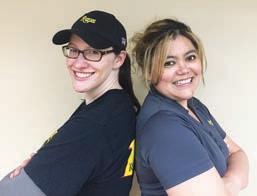
Of course, I did intern some many years during high school and at different times during college, but I did go work somewhere else for four or five years before I joined the business.
Marketing environmental sustainability

Laundry/linen experts say environmental efforts affect customer opinions, purchasing
 BY MATT POE, EDITOR
BY MATT POE, EDITOR
CHICAGO — AmeriPride Linen & Uniform Services is one of the largest uniform and linen supply companies in the world. At the end of 2017, it strengthened its business by becoming a wholly owned subsidiary of Aramark.
While the company has continued to make strides in business, it hasn’t been ignoring its impact on the environment.
“AmeriPride strives to lead the industry in sustainability and set the standard for clean operations,” says Bill Evans, president and CEO. “We have taken significant steps in our production and delivery operations
to increase efficiency, save energy, conserve water and reduce waste and pollution.”

According to Evans, the company has accomplished this by strict compliance with all government regulations and guidelines,


along with voluntary self-regulation activities, such as the industry’s Environmental Stewardship Program (ESP) and Clean Green
Columnist at Large
In this issue, Eric Frederick examines some textile basics for buyers to consider.
Minimum Space, Max Production Small space? Get creative to elevate production per square foot in the laundry.
Panel of Experts
Our experts offer their advice on achieving energy efficiency and water conservation.
AP RI L 2018
News
Late
www.americanlaundrynews.com INSIDE [4] See GENERATIONS on Page 6
The Newspaper of Record for Laundry & Linen Management
ENVIRONMENT on Page 10
See
[14]
(Image licensed by Ingram Publishing)
44, Number 4
Julia Buik (left) is just two years into her job as a Roscoe Co. business analyst, while Miriam Avila has been on the production floor for 23 years. (Photos: Matt Poe)
Volume
[16]
Your Views Survey:
Staffing challenges affect laundry operations
CHICAGO — Laundry and linen service providers are experiencing challenges when it comes to staffing their operations. Some positions seem to have a revolving door with employees cycling in and out, while other posts remain unfilled.
And these challenges negatively impact laundry operations.
That’s what respondents to a recent American Laundry News Your Views survey indicate.
Survey respondents were almost evenly split when asked if their facility experienced a high rate of turnover, with 49.2% answering “yes” and 50.8% indicating “no.”
In terms of the laundry positions experiencing the most turnover, as would be expected, those who took the survey point to various production jobs throughout the facilities. These include soil sorting, feeder attendants and folding.
However, a few respondents indicate that their business has high turnover with drivers and customer service representatives, and one says the company experiences turnover in manager/supervisor roles.

So, why does the laundry and linen service industry experience high turnover in production jobs? Nearly 22% of respondents indicate it’s because “work is labor-intensive and/or hours are long.” Almost 17% say it’s because working conditions can be uncomfortable, such as high temperatures and the necessity to stand for long periods of time.
Another 17% of survey takers indicate the turnover is because of “lots of competition for jobs.”
“Wages are typically lower than other industries,” writes a respondent. “Our industry is not known and needs to have an outreach program so that young, new workers can see the career opportunity, regardless of position.”
Adds another, “The new generation doesn’t like to work.”
On the other side of the coin, 76.3% of managers who took the survey say they have positions that are difficult to fill.
When asked to describe the positions, many respondents indicate they have difficulty finding maintenance staff. Others indicate that they have trouble finding sales personnel.
Some say they can’t find qualified managers and supervisors.
“It takes longer to fill lead/supervisory positions,” one survey taker writes.
“Positions of increased responsibilities like wash/dryer equipment operators are difficult to fill,” another respondent agrees.
The reason for staff positions remaining unfilled in the industry? Nearly 29% of respondents indicate it’s a lack of skilled workers. Similar to respondent answers to reasons for high turnover, 23.3% say “inadequate compensation” makes hiring difficult. Along those lines, 18.3% say they can’t fill positions because there are “lots of other jobs on the market.”

Interestingly, only 5% of those who took the survey indicate a lack of awareness of the industry is the reason for unfilled positions. And
only 8.3% say it’s because of a “negative perception of the industry.”
However, those aren’t the only reasons for unfilled positions, according to some respondents.
“Work ethic in this region is lacking,” writes one. Another writes, “Red tape in posting positions.”
Of course, the big question is how managers can keep employees from leaving. Answers were “recognize employee accomplishments” (14.8%), “compensate fairly” (11.5%), “communicate expectations better” (6.7%) and “provide advancement opportunities” (1.6%). However, the majority of respondents (64%) say the answer is “all of the above.”
When asked how important it is for managers to keep staff members happy, almost 64% of respondents say it is “extremely important.” A little more than 31% say it’s “somewhat important.”
Just over 3% indicate keeping staff happy is “neither important or unimportant,” while 1.6% say it’s “somewhat unimportant.”
In the end, high turnover and unfilled positions affect laundry and linen service operations negatively. More than 40% of survey takers say staff fluctuations cause operations to run “less efficiently, costing time and money.” The next highest effect, respondents indicate, is “finding replacements takes considerable time and money” (30%).
Other effects of staff fluctuations include “less effort made toward building teamwork and camaraderie” (8.3%), “challenging to keep employees up to speed on operational requirements” (6.7%) and “less experienced workers make more mistakes” (6.7%).
While the Your Views survey presents a snapshot of readers’ viewpoints at a particular moment, it should not be considered scientific. Due to rounding, percentages may not add up to 100%.
Subscribers to American Laundry News e-mails are invited to take the industry survey anonymously online each quarter. All managers and administrators of institutional/OPL, cooperative, commercial and industrial laundries are encouraged to participate, as a greater number of responses will help to better define operator opinions and identify industry trends.
Publisher
Charles Thompson
Phone: 312-361-1680
E-Mail: cthompson@ ATMags.com
Associate
Publisher/ National Sales Director





Donald Feinstein
Phone: 312-361-1682
E-Mail: dfeinstein@ ATMags.com
Editorial Director
Bruce Beggs
Phone: 312-361-1683
E-Mail: bbeggs@ ATMags.com
Editor
Matt Poe
Phone: 866-942-5694
E-Mail: mpoe@ ATMags.com
Production Manager Roger Napiwocki
Digital Media Director
Nathan Frerichs
Phone: 312-361-1681
E-Mail: nfrerichs@ ATMags.com
Advisory Board
Jim Buik • Greg Gurtler
Phil Hart • Janice Larson
Tom Marks • Gerard O’Neill Richard Warren
Main Phone: 312-361-1700 Fax: 312-361-1685
Subscriptions
630-739-0900 x100 www.americanlaundrynews.com
American Laundry News (ISSN 1091-9201) is published monthly. Subscription prices, payment in advance: U.S. 1 year $46.00; 2 years $92.00. Foreign, 1 year $109.00; 2 years $218.00. Single copies: U.S. $9.00; Foreign $18.00.

Published by American Trade Magazines LLC, 566 West Lake Street, Suite 420, Chicago, IL 60661. Periodicals postage paid at Chicago, IL, and at additional mailing offices.
POSTMASTER, Send changes of address and form 3579 to American Laundry News Subscription Dept., 440 Quadrangle Drive, Suite E, Bolingbrook, IL 60440. Volume 44, number 4. Editorial, executive and advertising offices are at 566 West Lake Street, Suite 420, Chicago, IL 60661. Charles Thompson, President and Publisher. American Laundry News is distributed selectively to qualified laundry and linen management and distributors in the United States.
© Copyright AMERICAN TRADE MAGAZINES LLC, 2018. Printed in U.S.A. No part of this publication may be transmitted or reproduced in any form, electronic or mechanical, without written permission from the publisher or his representative. American Laundry News does not endorse, recommend or guarantee any article, product, service or information found within.
Opinions expressed are those of the writers and do not necessarily reflect the views of American Laundry News or its staff. While precautions have been taken to ensure the accuracy of the magazine’s contents at time of publication, neither the editors, publishers nor its agents can accept responsibility for damages or injury which may arise therefrom.

MEMBERSHIPS
2 APRIL 2018 | AMERICAN LAUNDRY NEWS www.AmericanLaundryNews.com
INSIDE: April 2018 • Vol. 44 | No. 4 [8] Tools of the Trade [12] Invest in Equipment Benefits, Not Features In this month’s OPL 101, learn how to decide what is worth paying for to get a good operational return on investment [20] Being an Informed Linen Buyer Becoming familiar with a few basic components of textile production can help buyers choose quality linens [24] Career Track [26] Classified Advertising [27] Source Directory [30] Trade Ticker [30] Calendar of Events
ALN
Milnor has a better solution through dilution.
When Milnor introduced PulseFlow® technology, CBW® washing was thrust into the future. The idea of balancing time, temperature, mechanical action and chemistry was missing one critical piece of the pie – DILUTION through the efficient use of water.
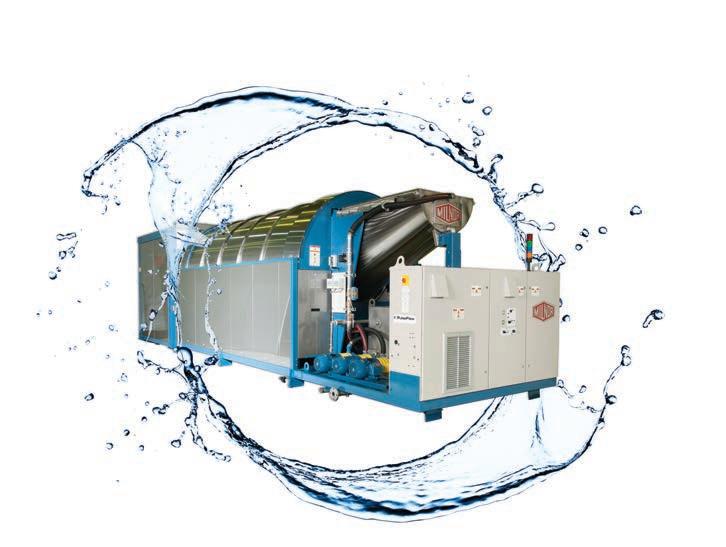
PulseFlow combines the innovative RecircONE® fast wet down and chemical immersion in the first module with standing bath washing in every spacious process module. Thorough and efficient dilution occurs by way of intermittent high velocity counterflow rinsing and traditional True Top Transfer.
The result is hygienically clean linen using less water (as low as 0.3 gallons per pound/2.5 liters per kilogram) and less energy as proven time and again by hundreds of PulseFlow tunnels in a variety of laundry applications worldwide.
Contact an authorized Milnor distributor or call 504-712-7656 to find out more.
www.milnor.com

*PulseFlow®,
and
are Pellerin Milnor’s registered trademarks.
CBW®
RecircONE®
Consistent threads
As you go through this issue of American Laundry News, you might notice a few themes running through it.
First, seeing as April is the month for Earth Day (April 22), it made sense to include articles on environmental sustainability in the laundry and linen service industry.
You likely saw the article on marketing environmental efforts that opens on the cover. The focus isn’t whether or not conservation of resources is a good thing in the industry (it is), rather, whether or not marketing it to customers is beneficial.
Short answer: Yes. You’ll have to read the story to get the reasons why, along with some ideas on how to market your environmental efforts.
So, how does a laundry become more energy-efficient
Coming Up:
The Editor’s Desk MATT POE
and use less water? We put that question to our Panel of Experts (starting on page 16), and they offer a range of ideas, from equipment checks to monitoring systems.
Another theme in this issue is what on-premises laundries should look for in equipment.
In this month’s OPL 101
column on page 12, Bill Brooks from UniMac writes about how to look for the right benefits (not simply buying features) and return on investment an OPL needs from its machinery.
Then on page 14, Seth Willer from Girbau Industrial/ Continental Girbau Inc. examines how to maximize production in a smaller space.

The final theme, or thread, to run through this issue is linen buying. Regular columnist Eric Frederick shares his thoughts on “textile basics,” starting on this page. Then, on page 20, Mark Kelleher from Venus Group writes about what “the informed linen buyer” needs to know.
Of course, there’s one theme that runs throughout each and every issue of American Laundry News—the need for everybody to keep it clean. ALN
TRSA’s Workforce, Safety summits

ALEXANDRIA, Va. — Building on the success of 2017’s creation of a sister event to address broader human resources and employment concerns, TRSA, the association for linen, uniform and facility services, says it will again supplement its annual one-day Safety Summit with a one-day Workforce Management Summit in 2018.
Scheduling these back-to-back events in a single location (May 16-17, Embassy Suites Downtown, St. Louis) addresses the need for unique programming for specialists in safety and human resources (HR), TRSA says. It also recognizes the crossover interests of industry professionals and will save on time and travel costs. In addition, the programs appeal to owner-operators, corporate and regional executives and plant-based general, plant, production and engineering managers, the association says. A dual-event registration discount is available.
Developed and delivered by the TRSA Human Resources Committee, the Workforce Management Summit’s keynoter is Lisa Ryan, the author and manufacturing industry veteran whose “grategy” consulting
focus is designed to develop workplace cultures that foster employee loyalty. “Grategy” builds a “foundation of trust” and creates an environment in which employees deliver greater output and work safer, thus improving corporate profitability.
Additional sessions will cover emerging concerns in employment and HR law, as well as crisis communication, onboarding, social media and workplace violence. A Q&A forum with HR professionals from the industry rounds out this event.
At the seventh annual Safety Summit, delivered by the TRSA Safety Committee, Scott Gesinger, CSP, will keynote. He applies psychology and engineering principles to help employers realize a “fearless future” of employee safety. Gesinger specializes in implementing new controls and best practices to replace those that are outdated or in need of refinements.
Other presentations include discussions of arc flash, ergonomics, fall protection, fire prevention, job safety analysis, new OSHA rules, post-injury care/fitness and safety leadership, plus a Q&A with industry safety professionals.
ALN
Textile Basics
The theme of this column comes from another reader of mine. He runs a commercial operation that is processing customer-owned goods (COG) for a number of hospitality customers.
Their problem is that a few of their customers are buying textile products that are not specifically designed to hold up to commercial processing. So, this article will discuss some of the basics of textile products and what everyone who is buying textiles should know.
My first point is that all textile products are not created equal. There is a substantive difference in the quality of the products that is normally reflected in the cost. I have often had the pleasure of working with new textile salespeople who are trying to gain critical knowledge of their product line while still making sales.
I can remember one person new to sales asking me why his company had to have so many varieties of sheets in their product line. Why didn’t the healthcare industry just settle on one sheet and everybody use it? He did not understand the reason for the various sizes, the various fiber blends and the various types of thread counts. He did not understand how his products were used in hospitals and the advantages and disadvantages of the various fiber blends.
The first managerial job I had was at a small hospital laundry in Bountiful, Utah. The administrator told me how many people had applied for the job who had never worked in a large healthcare laundry. Most of the applicants thought that because they did laundry at home, they were qualified to run the operation.
Unfortunately, I think many people who purchase textiles think they are experts because they buy clothing and sheets for their home.
It is a sad truth that all textile products are not created equal. Only quality textile products will process well though a commercial or healthcare laundry. The wash temperatures in a commercial laundry are normally considerably higher than those found at home. The mechanical action that the textile product experiences is greater, and those items that are dried in a commercial dryer are subjected to higher heat levels than can be found in a home dryer.
All these factors allow a large laundry operation to effectively wash and dry textile products at a cost acceptable to the customer. Most large laundries will iron the sheets as a means of quickly finishing the product—most of us do not take the time to iron our sheets at home.
This difference in quality and longevity is most critical when the person that purchases the textile products is not responsible for the processing of them. The greater the separation, the greater the chance for problems.
Textile products that were purchased by a small hospitality property and processed in-house in a 50- to 75-pound washer and dried in a similar-size dryer may not work well when sent to a commercial laundry.
The textile purchaser at a small hotel with an in-house laundry will immediately get feedback if the washcloth is too small or the towel is too rough. They may blame the chemical representative, but most likely they will know it was the textiles they purchased.
That same hotel textile purchaser will always blame the laundry for the loss or destruction of the textile products if there is a problem. The last thing that would ever cross his/her mind is to ask the laundry whether a particular textile product can be properly washed before it is purchased.
This is not a unique problem to COG laundries. As a large healthcare linen rental company, I was always being asked to handle specialty products from ICU, nursery or specialty surgical items for a very important doctor. Through constant interaction with the staff at the various hospitals that we serviced, we were able to learn about these potential new products and conduct studies to determine how well they held up in our laundry. We were able to avoid several key mistakes through this process.
The keys to avoiding textile product problems are:
1. Become educated on the various blends and thread counts being sold in your industry. Read up on the pros and the cons with each product and if any have special washing or handling instructions. Knowledge is power. I spent 43 years in

4 APRIL 2018 | AMERICAN LAUNDRY NEWS www.AmericanLaundryNews.com
From
COLUMNIST AT LARGE Eric L. Frederick, RLLD
Top Stories Appearing on AmericanLaundryNews.com for the 30 Days Ending March 15 (WE) = WEB EXCLUSIVE NEWS • HLAC Names 3 New Board Members • 19 Certified in Performance Matters Coaches Clinic • Gurtler Industries Named Supplier of the Year by ... • CLEC Completes Purchase of Texas Laundry Co. (WE)
Messe Frankfurt Expands Textilecare Events in Middle East
Eric Frederick: Learn Laundry Basics • Countering Sexual Harassment in the Workplace
Tax Reform and the Laundry/Linen Industry
It Pays for Laundries to Have Clean Facilities, Equipment
Survey: Staffing Challenges Affect Laundry Operations OUR SISTER
AmericanDrycleaner.com:
New Wrinkles: Lapels Drop Zone
In Memoriam: Jack Taylor Brown, Jack Brown Cleaners
•
COLUMNISTS/FEATURES •
•
•
•
WEBSITES From
•
•
From AmericanCoinOp.com:
that
• Clean History: A Laundromat
Anchors a Kansas Town
Offering
• Washlava Expands Tech
to Speed Queen ...
See BASICS on Page 20
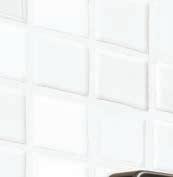

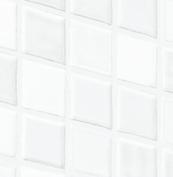
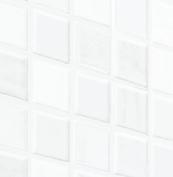

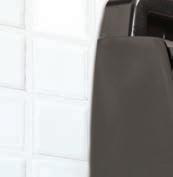
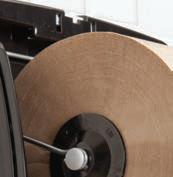

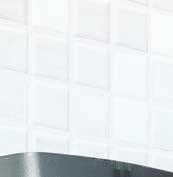

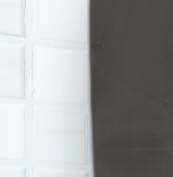

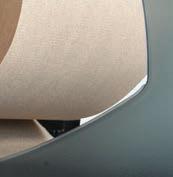
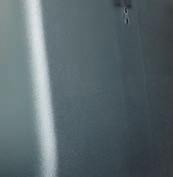
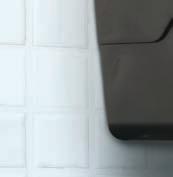
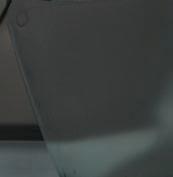
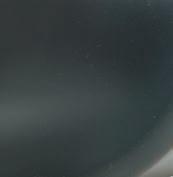
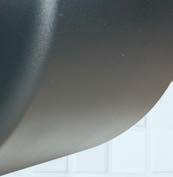






800 821 2221 americandawn.com | imagine@americandawn.com NO MINIMUMS. ADI is proud to announce our new product line of disposable paper products. With a variety of paper options and dispensers, we can help you service all your Customer’s needs. Same Day Shipping. No Minimums. ADI... We ARE the Difference!
Q: So, what are you doing now? What is your position?
Julia: I am business analyst, so what I’ve been doing is a lot of the analysis of different reports. I’m learning a lot of our IT software and our different databases and how they interact with each other and how we use those databases to pull metrics, to measure our customer satisfaction.
A lot of what my work entails here is the team leaders asking me to provide them with different information for their departments, mainly the service department, but sometimes the production department, and making sure to provide those teams with information and data they can use to make their teams stronger.
Q: Miriam, what’s your story? How did you get into the industry?
Miriam: I don’t know. I’m still trying to figure that out. (Laughter.)
Julia: But we’re glad she’s here.
Miriam: So, not too long after high school, it was one of those things where I wasn’t sure where I was going, what I was going to be doing with my life, so I’ll just get a real job for a “minute” here, and then I’ll figure what I actually want to do. I guess I still haven’t figured that out because I’m still here. (Laughter.) It’s taken me 23 years.
Juila: Maybe this is your real job?
Miriam: You’re absolutely right. Originally, I started in production, worked on the floor as a scanner operator and sorting garments. At the time, we didn’t have a fancy garment-sorting system, (it was) manually sorting. Then, kind of worked my way up.
Julia: You were the first operator of the sorting system.
Miriam: That’s right. I was here when they purchased what was a state-of-the-art sorting system—in 1997. I was part of that process and that project.
Around that time, the floor supervisor was starting to plan her retirement. As I had been growing with the company, learning new jobs, at the time they had a skill check certification. I was the first one in the nation to be skill check-certified at level one, and then they decided to go a higher level,
getting a certificate, skill check level two.
By then, I had learned so much from my supervisor just on how to run the operations on garment sorting. Then it became more structured. They started investing in me, sending me to classes, workshops.
Julia: Which ones did you go to early on?
Miriam: It was a lot of online training seminars, workshops they were doing. Anything you could possibly imagine, I was the first one to be asked, and I was loving it.

It came to the point we were ISO-certified and we needed to train other operators. It was very easy for me to work with my coworkers because we were just co-workers not too long ago. There wasn’t any, “You were just my co-worker before,” none of that.
Q: That’s rare to find in a company, isn’t it?
Julia: It was teamwork, important to the culture.
Miriam: It was teamwork. Yes, I was growing within the company, but I was able to relate and bring them up to a higher level. And that’s how I became a floor supervisor. But the plant manager kept giving me more responsibilities, letting me handle certain things. It was done in such a good way that it never felt like, “Here’s a bunch of responsibilities.”
Julia: Not a, “Here, I don’t want to do this anymore”?
Miriam: No, I got to the point where I was pulling more and taking more. That’s how I grew within the company, and then the plant manager retired, and I took that position.

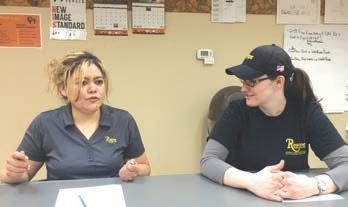
Some other structures have happened over the years, and I’m now the operations team leader.
Q: You’ve already talked a little about advances in technology, Miriam. What has been your experience, overall, with advancements in the industry?
they’re out there when it comes to technology. You have to do the proper training in small chunks. Once they accept it and are comfortable with it, they’re perfectly fine. I wouldn’t go to an employee who’s been here 20 years and say, “Here’s the new sorting system—click here, click here, log in, here’s your job,” and walk away, like you can do with a younger person, who is just on it.
You have to be able to operate and train with different mentalities in mind because people, like Julia, three steps, here’s what I want done, and she runs with it. It would take me an hour with somebody else to break it down to their level so they can be comfortable and they can run with it.
Julia: Your skill is recognizing what training they need.
Q: So, Julia, how about your thoughts on technology in the industry?
Julia: OK, keep in mind, I’m young and grew up with technology. My dad has loved computers and technology from probably the time he was in college or before.
Miriam: Oh, yes.
Julia: Where our front-office space is now, it used to be a room that held a giant computer, when computers were the size of a room. He convinced his dad that they needed a computer. I would sit on my dad’s lap, from the time I was little, just trying to play on the computer.
Now, I didn’t grow up with an iPhone or things like that like kids today, but I grew up with computers. I’ve always loved that technology. Roscoe has always been pushing for more technology through my dad. It was, “Let’s bar-code-tape everything.”
Miriam: But even now, you’re bringing it to a higher level. She’s like, “Why are we manually tracking this?” Or, “We need a spreadsheet.” Or, “We need to do this.”

it’s going that way.
Even the laundry, they do expect us to have data and provide reports at a snap of the fingers. Or, why can’t I just go online and look at my garment information? Now, we can do that. That’s something we weren’t able to do 10 years ago, but it’s expected. Just like the outside world is going that way, so are we. We just have to make sure we bring our team members with us.
Q: You’ve mentioned equipment advances, so let’s move on to automation changes over years.
Julia: The sorting system is the perfect example, from the older one to our new system.
Miriam: You can even go back as far as 20 years ago when we were manual-sorting. But, even though we were hand-sorting, we had towers that were breaking down the merchandise a certain way to make it more efficient and easier for us to hand-sort. Even then, we were up there in technology on how to manually hand-sort.
You go from manually hand-sorting to a system that took all of our uniforms and sorted them by route, account, the order the route service representative (RSR) makes the delivery, and locker. That machine was able to do that, to sort 1,500 garments within 13 minutes, no matter what you put in there. You could put in four routes or a single route.
You had one operator loading a machine, click a touch screen, and voila, 13 minutes later you have this whole route sorted— from four operators hand-sorting to a oneoperator process.
which required us taking additional tests, CPR, basic math and other extra stuff. So, I did that, mastered my job, and other jobs, throughout the whole process.

It was also at the same time the company was working on being ISO-certified. There was a lot of training and a lot happening with the company. Somehow, I was being pulled into different areas, whether it was for training or new equipment and, again, my supervisor was looking to retire. It wasn’t necessarily very structured back then, and I was loving it. They were just giving me this and then this, and the next thing I know, I’m
Miriam: It makes my job a lot easier. I love it. I’m all for it.
In our industry, sometimes it’s a little bit challenging when it comes to operators on the floor. There used to be operators who were literally afraid to turn on a computer and log in and put your name, (but) all you have to do is put your name. They would look at a keyboard or a mouse, and they would be very concerned: “I thought this was a laundry. I thought all I was going to do was hang stuff. You want me to touch a computer and do something with it?”
I do see that with some of the older employees, because they don’t feel that
Julia: It does sometimes take a fresh set of eyes to say, “But, why?”
I’m all about technology and tracking. I think it can only make the customer’s experience better to know when the last time you washed their garment was, when is the last time you saw it.
That’s how we can make sure, on the rare chance that anything is misplaced in our system, we can say it was soil-scanned only, but it doesn’t look like it ever left our plant. Let’s replace the item for free. Things like that.
Miriam: Our customers are expecting us to be ahead of the game as well. They’re doing it at their own places. They’re also having better technology, better equipment,
Julia: We got to that point 20 years ago. Miriam: Now, the future. I’ll let you handle this.
Julia: The fun part. It was the last major step when we consolidated from two buildings into one building about 10 years ago.
We got a new wash floor, new conveyors to move it from the washer onto the conveyor onto the clean sling to be hung, all of this cool technology and advancements, but the piece that we didn’t do yet at that time was the sorting system. What we did this past fall was get a brand-new Kannegiesser ETECH sorting system shipped all the way from Germany in lots of wooden crates. It’s beautiful and shiny.
I was peripherally around during the plant consolidation when I was in college. It’s been a great experience to see the benefits and challenges you have as you put in an amazing new piece of equipment. I think it allows for more checking of garments. We have a way now to scan during sorting to flag something to go to the repair area. It’s wonderful what it can do.
Miriam: It is, but the one thing I will never get tired of highlighting is how it went from being an idea to action plan. Jim always had all of us included, from the birth of the project to throwing stuff out, what do we want. We had meetings. We included IT and production employees.
6 APRIL 2018 | AMERICAN LAUNDRY NEWS www.AmericanLaundryNews.com
Continued from Page 1
Generations
See GENERATIONS on Page 22
Avila (left) shares thoughts on the industry from her experience while Buik listens.
“I’M ALL ABOUT TECHNOLOGY AND TRACKING. I THINK IT CAN ONLY MAKE THE CUSTOMER’S EXPERIENCE BETTER TO KNOW WHEN THE LAST TIME YOU WASHED THEIR GARMENT WAS...”
“I STARTED IN PRODUCTION, WORKED ON THE FLOOR AS A SCANNER OPERATOR AND SORTING GARMENTS ... WE DIDN’T HAVE A FANCY GARMENT-SORTING SYSTEM, (IT WAS) MANUALLY SORTING.”
—JULIA BUIK
—MIRIAM AVILA
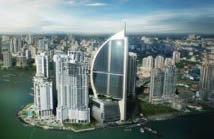
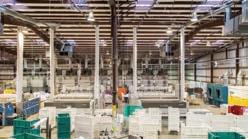

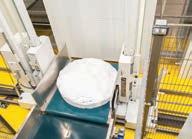
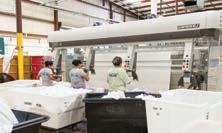
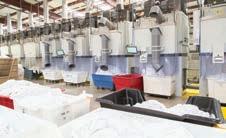
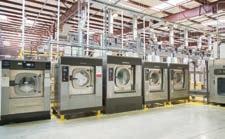

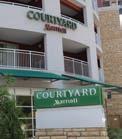
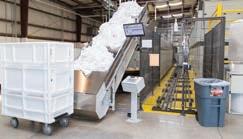
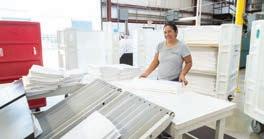
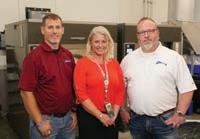
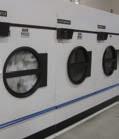
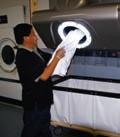
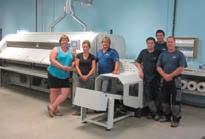
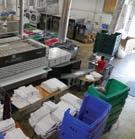
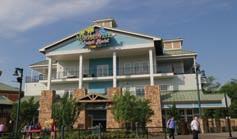
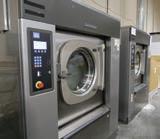
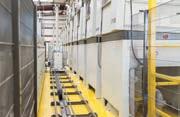
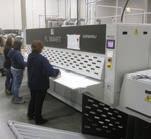
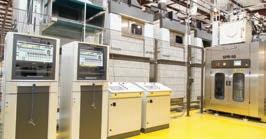
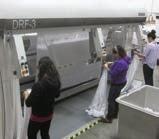
In under four years, Whistler Laundry increased production 90 percent by embracing production automation. The commercial laundry startup added equipment and automation as it grew — improving product quality, bolstering productivity, capturing new clients and lowering labor costs. INDUSTRIAL Discover how production automation can increase throughput, improve productivity & boost profit. (800) 256-1073 • girbauindustrial.com INNOVATIVE LAUNDRY SOLUTIONS
Tools f the Trade
Feed board guide rakes stop belts from overlapping
New feed board guide rakes for flatwork ironers and folders from laundry product supplier Tingue provide the configuration needed to keep feed belts securely in place and properly aligned during long-term, 24/7 operation without overlapping each other, the company reports.
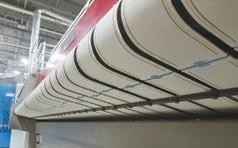
Virtually eliminating the potential for linen jams due to belt misalignment, Tingue says the new rakes reduce gobacks and downtime for maintenance while also preventing premature belt failure.
Proven effective in retrofits on cylinder ironers, large-roll ironers and folders in hotel laundries, hospitals and textile service plants, the company says the durable, steel-feed board guide rakes are custom-manufactured at its Greensboro, N.C., parts facility based on the requirements of each laundry machine to address the belt width, number of slots per belt, and open spaces for photo eye sensors, among other specifications.
3-D visual effect added to

In addition, the custom rakes help ensure proper belt tracking even when installed on flatwork ironers with damaged or missing fingers.
Offered exclusively from Tingue representatives, the company says the new guide rakes are available for laundry equipment from several manufacturers. www.tingue.com 800-222-9954
apparel, merchandise emblems
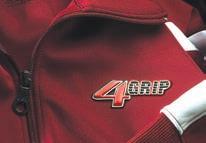
World Emblem, a developer of high-quality decorations for apparel and merchandise, says it has launched its DomeX technology, which offers brands a wide variety of colors and textures, including a 3-D visual effect, within the same emblem.
DomeX is part of the company’s signature FlexStyle series, which includes new emblem tech-
nologies that create a high-end look for several applications.
The company says DomeX joins DecoX as two of the latest innovations to come out of its in-house research-and-development department. Both are created via a special process that bonds multiple materials together to create a piece that has the look of a 3-D textured emblem, but the physical flexibility and versatility for nearly limitless applications.
The materials can also adhere to virtually almost any surface, according to the company.
World Emblem says a DecoX emblem resembles a traditional embroidered logo, but offers a much higher level of detail that makes colors and textures more visible to create a more vibrant look.
Later this year, World Emblem says it will launch two new, additional FlexStyle technologies. www.worldemblem.com 800-766-0448
George O’Day’s Inc. says it has secured a new patent for a locker design that is intended to provide greater ergonomics for its users and improve installation efficiency.
In a business climate with increased focus on worker safety, concerns were identified by O’Day’s experts regarding the height of previously existing locker designs, which they found carried the risk of imposing shoulder injuries with repetitive use.
Former designs, at 84.5 inches
tall, require workers to raise their arm up over their heads repeatedly as they hang hundreds of garments each month, according to the company.
To address the issue and help protect workers, O’Day’s has patented the Ergo Locker. The new design is shorter, at 78 inches overall, and features a hanging bar that can be lowered and brought closer to the front of the locker, giving users easier access. It is also lighterweight, and easier to maneuver and install.
The Ergo Locker, filed under Patent No. US 9,743761 B1, is also safer than former locker designs in that it has a much greater tipping point due to its lower center of gravity, O’Day’s says. Older locker designs could tip over with a weight of just 58 pounds hung on the front. At 78 inches, the Ergo Locker’s tipping point is 71 pounds, reducing the possibility of the locker system falling onto a worker.
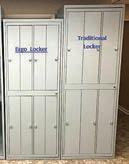
www.oday.com 800-253-1160
Encompass Group LLC has introduced the Synergy™ Professional Apparel longsleeve scrub top for operating room (OR) settings, the company reports.
According to the company, barrier sleeves aid in reducing the dispersion of dead skin scales or squames into the OR and hospital air. Less skin exposure aids in reducing the skin-to-skin contact between patient and caregivers.
Encompass says the new long-sleeve scrub top fulfills AORN guidelines for surgical attire recommending the covering of arms. The top also features a little extra “modesty”
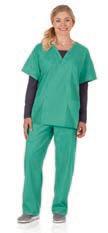
coverage around the neck area.
Synergy™ Professional Apparel blends durability and value with a fashionable variety of styles and colors, according to the company. All styles are made of Synergy fabric, a durable, poly-rich blend that is comfortable, opaque, and quick drying.
Encompass says the new tops come in 14 popular colors and a range of sizes from XS to 5XL. Coordinating pants are available.
www.encompassgroup.net 800-284-4540
Manufacturers: Have you introduced a new product? Revamped your system? Released a new catalog? E-mail your product news, along with a high-resolution image, to mpoe@atmags.com and we’ll consider publishing your news free in Tools of the Trade.


Leonard Automatics says it manufactures steam tunnel finishers for every garment process and production need.





Leonard says its Stack-N-Store multi-lane draping stackers come in three-, five- and six-lane configurations for fast and reliable stacking to reduce labor.
The LCW Series 304SS single and double cart washing system has unmatched drying capacity, according to the company.
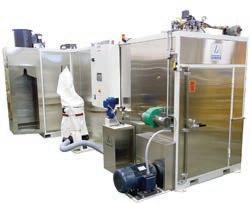
LF136C combination largepiece folders have optional stackers, as well as small-piece accumulation, according to Leonard, and
its transporter garment conveyor is built from stainless steel, providing greater pull strength and corrosion resistance. The company also says it offers pressing and tensioning equipment for any pressing need.
The company points out that it offers financing on all its machines, with competitive interest rates with three- to five-year terms. According to Leonard, applying is easy with a one-sheet application and quick approval turnaround time.
www.leonardautomatics.com 704-483-9316
8 APRIL 2018 | AMERICAN LAUNDRY NEWS www.AmericanLaundryNews.com
Newly patented locker design said to improve safety, ergonomics
Steam tunnel finishers available for all types of processes, production needs
scrub top with modesty neck panel introduced for operating room personnel
Long-sleeve
Results on whites are excellent. On colors, you have nothing more to lose and everything to gain by trying YellowGo. YellowGo may take out color you want to keep. But if it removes the unwanted dye without damaging the underlying color, you win! You won’t have to pay for the dye-stained garments and you won’t disappoint your customers.

So use YellowGo to keep your customers happy and keep them coming back.

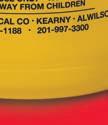




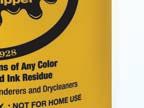
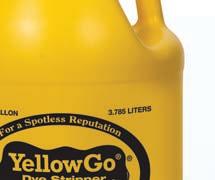
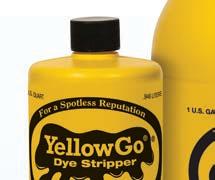
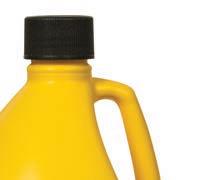
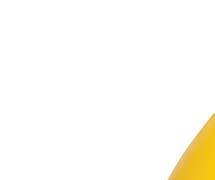
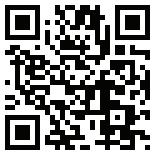
information visit
or
or
YellowGo® removes unwanted dye from fabric. For more
AlWilson.com
call us at 800-526-1188
201-997-3300
certification from TRSA, the association for linen, uniform and facility services.
“We also test new technologies and pilot new programs that raise the bar and help move the industry forward,” he says.
While the need for laundry services to be environmentally responsible is obvious, the effectiveness of marketing sustainability to customers and potential customers hasn’t been so clear.
However, to Evans, the need is quite clear.
“We were finding that many of our prospects were asking for evidence of sustainability in RFPs [requests for proposals] and throughout the sales process,” he shares. “In addition, our existing customers were asking about our efforts. More and more, customers are asking for evidence of sustainability and corporate responsibility during account reviews and the renewal process.
“While it’s difficult to qualify with an actual number, we can say that our efforts have undoubtedly supported our new-business and retention efforts, and that ultimately impacts our bottom line.”
CLEAN GREEN SURVEY
The Clean Green certification Evans mentions provides a means to promote the industry’s environmental virtues to its customers and prospects, says Joseph Ricci, TRSA president and CEO.
“All Clean Green promotion reflects positively on all operators, because just having an industry sustainability certification suggests the industry is good for the environment,” he points out. “But industry customers concerned about conservation are urged to do business with linen, uniform and facility services companies that have earned the certification.”
According to Ricci, TRSA’s Marketing/PR Committee surveyed the 58 companies who have earned Clean Green certification about tactics they use to promote their attainment of the designation. In order of popularity among respondents, here are those they use:
• Clean Green logo/information presented on company website.
• Logo placed on printed materials (invoices, forms, sales collateral, etc.).
• Logo placed on trucks.
• Logo included in electronic communication (e-mail signatures, e-blasts, social media, etc.).
• Clean Green mentioned in press releases.
“More than 60% of our survey respondents indicated they have attempted to work with customers to connect the Clean Green certification to customers’ quantification of their sustainability success,” he shares.
Some responses provided to the question about how the certification has benefited their companies include:
• “Has given us third-party verification that our process employs best management practices for energy- and water-conservation efforts.”
• “Credibility and differentiator.”
• “Some prospects have asked about green initiatives we are involved in.”
• “Helped us gain traction with environmentally conscious customers.”
• “Helps validate our commitment to environmental sustainability.”

“Ultimately, customers are concerned about price and the alignment of good environmental stewardship and best management practices that reduce water and energy usage, and increase efficiencies to help control or reduce costs,” says Ricci.
INDUSTRY EFFORTS
The environmental efforts AmeriPride has made are impressive. In recent years, Evans says the company has incorporated heat reclamation systems and made equipment upgrades in its production facilities, added solar power at two plants, improved wastewater treatment and switched to more environmentally friendly detergents.
“We have also implemented water reuse systems and recycling programs at many of our facilities,” he adds.
And AmeriPride has been at the forefront of environmental sustainability on the delivery side, according to Evans.
“We have replaced much of our fleet with newer vehicles, replaced cargo vans with fuelefficient sedans, and improved efficiency and shuttle capacity in many of our semitrucks,” he says. “We have also incorporated alternative-fuel vehicles (propane, compressed natural gas, electric and hybrid electric) into our fleet.”
In addition, Evans says the company uses new routing software to improve delivery efficiency, and it has incorporated telematics technology into all of its vehicles to promote more efficient driving standards.
Ricci points out that the entire industry has focused on reducing water and energy consumption and using more environmentally friendly wash chemistry.
“We have reduced energy consumption by recapturing heat from dryers and wastewater to reheat water for the wash cycle,” he says. “The wash aisle has reduced water usage through reuse and recycling and tunnel washer reuse of rinse water that would have otherwise been sent down the drain. In addition, the industry voluntarily removed NPEs from their chemistry after EPA [Environmental Protection Agency] research indicated their harm to aquatic life.”
BUSINESS MODEL
Ricci says it is the “perfect sustainable business model” when business interests and environmental concerns align, resulting in reducing costs for energy and water, while improving efficiencies reduces the impact on the environment.
“Founded more than a century ago to reuse textiles and take advantage of the benefits of mass processing as the ‘original recyclers,’ the fundamental environmentally friendly aspects of the industry and basis in conservation not only created the industry, but has sustained it,” he shares.
The earliest users of towel service, then linens and uniforms, contended with scarcity of resources and saw the conservation benefits of comingling their laundry work, according to Ricci.
“They weren’t intentionally protecting the environment, but they fueled development of an industry that has steadily grown more adept in accomplishing this over the decades,” he points out. “To remain in business, competitors must increase proficiency in this respect. So, you can’t say they’re either motivated by economics or caring for the
environment; it’s a chicken-or-the-egg question. The two are completely synergistic.”
According to Evans, sustainability is becoming increasingly important to AmeriPride’s customers, prospects, employees and shareholders.
“And if it’s important to them, it’s important to us,” he relates. “The world is changing, and we need to change with it. If we can improve sustainability and do so in a way that is cost-neutral or, better yet, increases efficiency and positively impacts our bottom line, everybody wins.”
Evans notes that there are financial benefits to becoming more operationally efficient, “but it goes way beyond that.”

“Becoming more sustainable helps protect the environment and conserve resources, it builds our reputation and credibility in the marketplace, and it helps us win new business and recruit and retain employees,” he says. “Right now, it is a key differentiator for us.”
Evans says the company includes information about its sustainability efforts in sales materials, brochures, other promotional materials, press releases, even on business cards. Obviously, the efforts are highlighted on the company’s websites and on social media.
In addition, AmeriPride produces an annual corporate responsibility report and online interactive brochure to help promote efforts, while also talking up efforts internally through employee newsletters and announcements.
“We’re not necessarily doing it for the recognition, but it’s an added benefit,” shares Evans.
“As one of the biggest players in the industry, we feel like it’s our responsibility to test and promote new technology and processes,” he says. “Our scope and scale allows us to pilot and incorporate new systems into our operations and help push the industry forward. This improves the overall reputation of the industry, and that benefits us all.”
He adds that being recognized as a sustainability leader helps AmeriPride recruit and retain the best talent, especially younger professionals who place a high value on corporate responsibility and ethical operations.
“All linen and uniform services point out their environmental virtues, it’s fundamental to the industry,” Ricci says. “Conservation practices are standard operating procedures now for everyone in the business.”
The question, he says, is the extent to which those linen, uniform and facility service operations who are most efficient will qualify and quantify their environmental virtues to encourage detailed comparison with competitors’ efficiencies.
Ricci shares a hypothetical scenario about the value of promoting environmental sus-
tainability: Consider two laundries competing for a large industrial uniform rental account. A high-volume laundry with new, high-capacity equipment will use less water and energy to serve this account than a competitor with low volume and older, less efficient equipment.
“The high-volume laundry will also be more efficient in other ways, such as material handling and delivery, that will minimize costs per pound and make the operation more price-competitive,” he says.
If the account were smaller, though, with unusual uniforms or other rare service needs requiring small wash loads and much manual handling, the expense gap might not be as large, Ricci points out.
Or, if the account had long been a customer of the lower-volume laundry, which had earned a reputation for responsive service, the cost differential might not be as meaningful.
“It’s incumbent upon more environmentally friendly laundries to tout their green virtues as they increasingly seek business from smaller accounts with unusual needs,” Ricci points out. “Soon, the most efficient of them, armed with data on their water and energy efficiencies and estimates of their competitors’ efficiencies, will estimate for prospects the carbon footprint differences resulting from their choices of one laundry or another.
“Given that scenario, it’s reasonable to expect customers to be more attentive to these details.”
CONTINUED ENVIRONMENTAL MARKETING
According to Ricci, customers are more likely to inquire about the sum of environmentally friendly practices as opposed to the parts.
“While we haven’t quantified this sentiment, we have observed its pertinence, especially among public sector users of the industry,” he says. “Many government entities must document their justification of their purchase decisions, either before or after the decision, by profiling bidders or the selected candidate. Clean Green companies bidding for their work mention the certification in their sales promotion and these profiles reflect it.”
“Interest and attention from customers will likely remain strong for some time,” Evans adds. “We will have to wait and see if sustainability eventually becomes ‘table stakes’ in our industry. In the meantime, we will continue to look at new ways to be operationally efficient and reduce our impact on the environment, and right now we see these efforts as a competitive advantage.”
The biggest challenge he sees is to find a way to implement new solutions without it becoming cost-prohibitive.
“The marketing benefits are apparent, if we can make it financially feasible,” he says. ALN

10 APRIL 2018 | AMERICAN LAUNDRY NEWS www.AmericanLaundryNews.com
Continued from Page 1
Environment
Ricci
Evans
(Image licensed by Ingram Publishing)
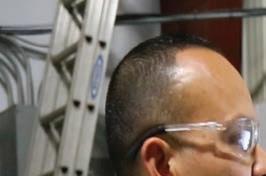
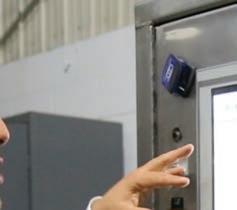
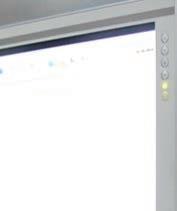


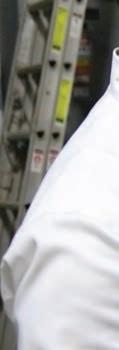

























“YOUR PRIORITY IS OUR PRIORITY” Leonardo Gastelum at CITY Laundering, IA National Account Manager of Customer Care THE LIMITS WITH NORCHEM ARE ENDLESS “At the top of Norchem, the technology and systems they design are second-to-none. They are the best in innovation in the chemistry industry, and they are really pushing the envelope.” Colin Wetlaufer President CITY Laundering WASH AISLE CHEMISTRY ADVANCED WATER TECHNOLOGIES PLANT INFORMATION SYSYTEMS SPECIALIZED FABRICATION FOR ALL LAUNDRY SEGMENTS INSTITUTIONAL HEALTHCARE HOSPITALITY INDUSTRIAL LINEN SUPPLY
Invest in benefits, not features
BY BILL BROOKS
RIPON, Wis. — Based here in Wisconsin, I can tell you we are definitely a “pickup truck state.”
Of course, based on truck sales, the same can be said of a lot of areas in the United States. These vehicles are popular and come with a wide range of options—offroad package, crew cab, full box, tow package, plow, and the list goes on.
If money isn’t an issue, we all will go for the fully loaded model, right? Sure, I may not own a boat or camper, but, yeah, I’ll take the trailer hitch and tow package. The last time I needed to transport full-size sheets of drywall or plywood was 10 years ago, but, darn right, I want the full-size box.
So, what does all this truck talk have to do with laundry? Well, it’s a similar story for on-premises laundry (OPL) operations. Managers would gladly take all the advanced features and functions if the price wasn’t an issue. But as we all know, price most definitely is an issue in this industry. The question is, what is worth the laundry paying for, and what features might not ever deliver returns for the operation or will take decades to recoup the up-front investment?
PRICE VERSUS COST
In discerning what features are worth paying for in the laundry, managers first must look at return on investment (ROI) and the difference between price and cost. Price is the sum required to purchase a piece of equipment. Cost is the amount tied to operating the machine—essentially the ROI.
For instance, a manager could elect to purchase the lowestpriced washer-extractor on the market and save money up front. However, it’s likely that, due to a reduced feature set, the washer will cost more to operate over its lifespan. Costs can include utilities, labor and linen replacement.
By contrast, a higher-priced unit may deliver far more in features. It may use water more efficiently. It may have a higher g-force spin speed to remove more water and reduce drying time and gas usage. Overall, faster cycle times will help the laundry increase throughput and reduce labor costs (the most significant cost to operating an OPL).
The result is that the higherpriced washer may actually cost less to operate. Lower operating
costs shorten the time period to deliver ROI, thereby paying for the machine faster.
When planning a purchase of new laundry equipment, managers should understand this concept of price versus cost to effectively evaluate what features may make sense for their operation.
Operating costs and ROI are key concepts to consider.

LOW-VOLUME LAUNDRIES
Perhaps the easiest way to take a look at features worth paying for is to size up specifics for a couple different laundry operations. Let’s look at a low-volume laundry. A 70- to 80-room (or less) hotel may fall into this category. Perhaps employees have responsibilities besides processing laundry loads.
In most larger operations, I would recommend high-g-force extraction. However, for a smallscale operation that isn’t focused on delivering large throughput numbers, but rather just completing the task each day, a mid-level g-force of 200 is likely adequate. Opting for this lesser feature will help the laundry save money upfront without sacrificing a great deal in costs.
This same strategy would apply for fire departments, where care and quality of the technical fibers in the personal protective equipment (PPE) is the most important focus. So, high g-force is not a feature to pay for. However, advanced programming to dial-in wash programs is the way to go. Quality care is non-negotiable.
That low-volume hotel laundry will see better ROI by trading the super-high g-force in favor of investing in a tumble dryer equipped with over-dry prevention technology. While the 200 g-force will mean a bit more drying time, moisture sensing will ensure no wasted utilities, drying to a set moisture level and stopping the unit. The additional value to the operation is better quality and longer linen life.
While there may be a variety of functions not useful for a smallerscale laundry, a laundry management system could be an additional tool for managers. At the very least, the end-of-cycle alert text message could keep employees productive, versus checking on load progress. Management also would gain visibility to how the laundry is running. Again, this may be more of a “nice to have” feature, but certainly worth considering.
HIGH-PRODUCTIVITY LAUNDRIES
In heavy throughput operations, time is money. For these laundries, operating with the demands of having to complete high laundry volumes per shift, small savings in cycles can deliver significant savings in labor dollars. This is why managers may want to explore a variety of features, perhaps well inside the machines, that can have a broad impact on costs.
While a low-volume laundry may be able to concede g-force, for a high-throughput laundry, ultrahigh g-force of 400 is mandatory and definitely worth paying extra for. Compared to a 90-g-force unit, dry time can be cut by 10 or more minutes, or more than an hour a day. Again, this is where features can be directly linked to lower operating costs.
Another of those features is fill valves. Managers should talk to their equipment distributor about the size and number of fill valves on the washer-extractors they are considering. Most value-line units are equipped with two, half-inch valves. This is pretty standard. However, upgrading to a higher-featured machine could bring four, three-quarter-inch valves. Is such a feature worth paying extra for?
Well, consider that for a 65-pound machine, the difference in fill time is roughly three minutes, given five fills per cycle. In a
busy on-premises laundry doing 10 loads per day, that’s about 30 minutes of time savings.
On the drying side, moisture sensing is another must-have that will deliver lower operating costs and time savings. Labor and utility savings can be in the thousands of dollars. In consideration of this feature, managers should have a look inside the machine and a conversation with their distributor.
The feature is worth paying extra for, and has an ROI of a few months, provided the system accuracy is high. Accuracy is a product of sensing area—the greater the sensing area, the greater the accuracy. So again, have a look inside the machine; don’t base buying decisions solely on marketing claims.
Leveraging technology to manage the operation will prove beneficial as well and is worth the additional cost for a larger operation. For busy laundries that are running multiple shifts, it is impossible for managers to be on-site at all times.
Laundry management systems bridge this gap and act as a check that all those machine features the operation invested in to trim costs are being properly utilized.
What good are costsaving features if you never reap the savings?
Today’s technology helps managers ensure processes are being followed and efficiency levels are reached.
FINAL THOUGHTS
Like the truck analogy, laundry managers have seemingly endless options for the equipment they trust to help them manage the throughput load. But not all features will bring immediate value to all operations, or the payback period is far too long. This is why it is so important to work with a distributor who truly understands a laundry’s unique needs.
After all, if you live in Florida, you don’t need that truck salesman selling the snow plow package. Same deal in our business. That small-scale laundry may never truly benefit from four fast-fill water valves. But for the laundry running two or three shifts, those time savings are significant.
Do your homework; work with a quality, full-service distributor; and get the truck ... laundry equipment that fits your needs. ALN
Bill Brooks is the national sales manager for UniMac, a provider of on-premises laundry equipment. He can be reached at bill.brooks@ alliancels.com or 920748-4437. Brooks

12 APRIL 2018 | AMERICAN LAUNDRY NEWS www.AmericanLaundryNews.com OPL 101
How to determine what is worth paying for in laundry equipment
(Image licensed by Ingram Publishing)
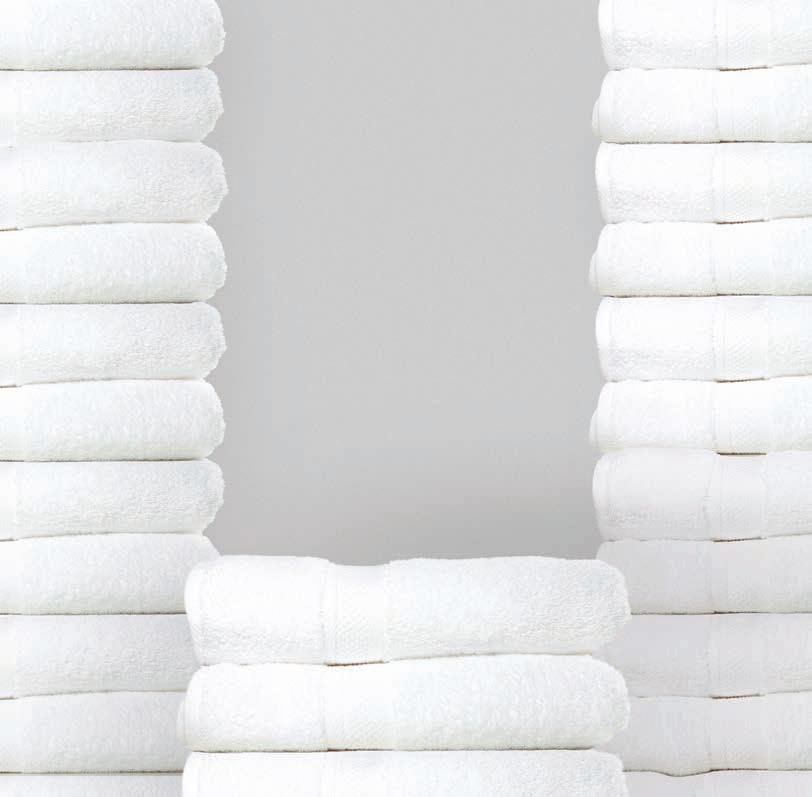

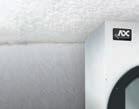
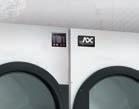

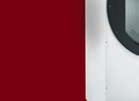
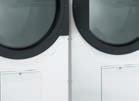



Financing as low as 2.99% for 12 months.* CONTACT AN ADC DISTRIBUTOR TO LEARN MORE OR VISIT ADCLAUNDRY.COM Trust Your Linens With ADC. Machines designed to help streamline your laundry facility’s throughput. ®/™ ©2018 ADC. All rights reserved. *This promotion is valid January 1, 2018 – April 30, 2018 and rate may vary depending upon individual credit profile. This promotion is valid for applications received by April 30, 2018 and funded by June 15, 2018.
Maximizing production in tight space
The case for compact, soft-mount, automated equipment
BY SETH WILLER
OSHKOSH, Wis. — Let’s say your laundry area isn’t producing adequately or efficiently. It’s too small and you, as the laundry manager, are restricted to that space. What do you do?
It’s time to get creative. Ultimately, you want to elevate production per square foot (produce more in a smaller area using less labor).
On-premises and commercial laundries often struggle to meet production throughput goals simply because they lack the space to house equipment. How do these laundries improve production per square foot and simultaneously elevate production per operator hour (PPOH)?
In this article, I make a case for compact, soft-mount and automated equipment.
CHOOSING EQUIPMENT: WASHERS & DRYERS
Thankfully, there are great options on the market to help amp production throughput using less floor space. You just need to know what to look for. Consider the following:
1. Soft-Mount Design Freestanding washers make for simple installation, without boltdown, and allow for close installation clearances (0.4 inch). By comparison, hard-mount equipment requires reinforced concrete foundations, bolt-down and clearances of up to 18 inches or more.
duration at the end of the spin cycle. That’s why a soft-mount washer generally removes more moisture during extract—reducing dry time.
This allows laundries to move more laundry through the wash line more quickly. Some softmount washers can shorten dry times by up to 50% over hardmount washers.
Go with soft-mount washers for:
• Close installation clearances of just 0.4 inch.
• Higher g-force extract speeds for more moisture removal.
• Greater production throughput.
































2. Compact Footprint with Greater Capacity/Performance
Choose washers and dryers that feature bigger basket capacities, yet smaller footprints. There are models on the market that output considerably more production, using less labor and energy, when compared with other options occupying a larger area.
CHOOSING EQUIPMENT: AUTOMATION
By saving square footage with washers and dryers, a laundry might create the space needed for automation. The most laborintensive area of any laundry is on the finishing side because it involves folding. By adding automation—feeders, ironers, folders and stackers—laundries significantly decrease labor and operational costs while bolstering throughput. This generates more pounds per operator hour (PPOH).
If you aren’t benchmarking productivity in your laundry now, you should really start. A common benchmarking metric is PPOH. Once employee PPOH is recorded, then you can apply automation to measure the PPOH increase and justify the equipment purchase.
Only one operator is required to run most all-in-ones. By eliminating hand-folding and -feeding and investing in an all-in-one, a laundry could eliminate one to four operators, a feeder, ironer and a folding table/station. Plus, it’ll drastically improve production.
As the g-force of a hard-mount washer increases, so does its required installation clearances. Whereas soft-mount machines can be located right next to each other for less occupied space and improved workflow. Also, by choosing soft-mount washers, laundries realize other production benefits over hard-mount washers.
Soft-mount washers, depending on the brand, generate up to 400-g-force extract speeds. Hardmount washers, on the other hand, generally don’t exceed 200 g-force. Or, if they do hit highspeed extract, it’s only for a short
Consider quality, labor and production needs before purchasing any equipment, especially when introducing automation. Do you want a single ironer? An ironer and feeder? Or an all-in-one that feeds, irons, folds, stacks and accumulates? Are you ready to add a towel/blanket folder? Look for automation equipment that’s productive, compact, flexible and installable in a small area with minimal clearances.
Also, keep in mind that automation will save loads on labor costs. Take that monthly labor savings and invest it in automation. The new automated equipment will be paid off in three to five years but will last 15-20 years. Check out these examples.
1. All-in-One (feeds, irons, folds, stacks, accumulates)
An all-in-one machine:
• Processes sheets, pillowcases, duvet covers, napkins and tablecloths.
• Lowers labor costs associated with manual folding, feeding and stacking.
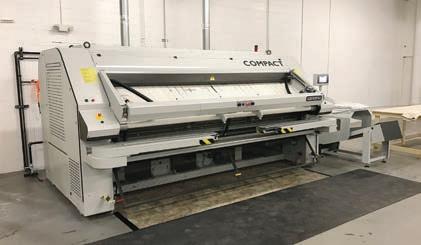
• Requires only one operator versus up to five.
• Frees space previously needed for feeder and ironer (if a laundry has those).
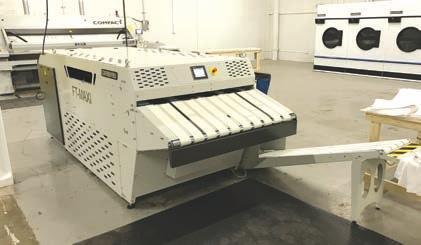
• Eliminates folding table/area.
• Produces from 150 pieces to 210 pieces per hour for great gains in PPOH.
Tip: Look for all-in-ones that feature a compact design and return folded and stacked items to the operator at the front of the machine. This will make better use of space.
2. Multi-sort Small-piece
Folder (sorts, folds, stacks)
There are two types of automatic dry-work folders—models that automatically sort and those that don’t. Both will quickly fold blankets, bed pads, hand towels, bath towels, bath mats and more. An auto-sort folder, however, offers the added benefit of automatically sorting items as they are fed into the folder. Items are then automatically stacked.
Let’s use the following example to illustrate the impact of towelfolding automation. One person can sort and fold about 120 pieces/ towels per hour. By comparison, a standard dry-goods folder automatically folds and stacks 400-600 pieces per hour.
A multi-sort folder:
• Automatically sorts, folds and stacks pieces of varying sizes.
• Requires only one operator versus three to six for handfolding.
• Slashes labor costs associated with sorting and folding.
• Doesn’t take much space and is relatively inexpensive.

• Reduces the hand-folding area.
• Produces from 650 pieces to 1,000 pieces per hour for great gains in PPOH.
ANALYZING COSTS & SAVINGS
Remember, there are always two costs when buying: The cost of the machine (automation) and the cost of ownership with or without that machine.
The cost of the machine may seem like a lot, but what’s its operational impact? Compare your laundry’s finance payment to operational cost savings. Many times, the difference in labor costs will make up for the equipment payment each month. ALN
Seth Willer, Girbau Industrial/ Continental Girbau Inc., has expertise in on-premises, commercial and industrial laundry design, equipment, workflow and productivity. He works closely with laundry operations and equipment distributors to develop efficient, productive and profitable industrial laundries. He can be contacted at swiller@ cgilaundry.com.
14 APRIL 2018 | AMERICAN LAUNDRY NEWS www.AmericanLaundryNews.com
Compact, soft-mount, automated equipment can help on-premises laundries maximize production in limited space, the author says. (Photos: Continental Girbau)
All-in-one, automated machines decrease costs and bolster throughput, according to the author.
Yes, partnering with UniMac allows you to achieve optimal laundry throughput, heightened customer satisfaction and minimized operating costs today. But that’s just the beginning. Our global network of distributors is always by your side, ready to troubleshoot at a moment’s notice. Our expert team of technicians, bolstered by decades of experience, provides the industry’s most reliable support. And when you’re ready to upgrade, UniMac Funding makes financing fast and easy.















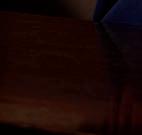



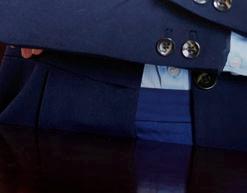

Visit us online to discover what partnering with UniMac could mean for you— including savings of up to $14,000 per year.











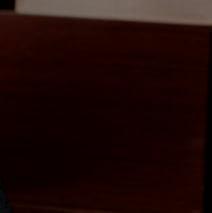
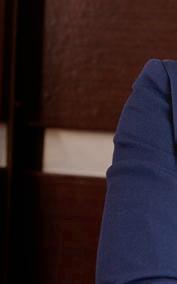
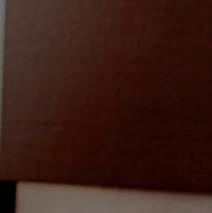








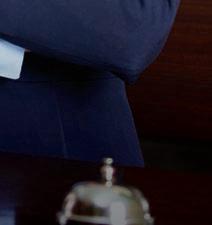
AT YOUR
UNIMAC.COM/HOSPITALITY
SERVICE 24/7/365
UniMac by Alliance Laundry Systems
PANEL OF EXPERTS
Improving energy efficiency, water conservation
leak. If the team was not measuring consumption, this water loss could have continued for years.
Evaluating your plant’s energy and water efficiency is key to improving your operation’s bottom-line performance. Plants often attempt to start with some type of new or modern energysaving systems or devices, but most should start with a basic approach to conservation efforts. Here are some thoughts about specific areas of concern:
Proper Load Sizes. This is the one area that can have the biggest impact, with no added capital costs. If you are underloading your washer’s established weights, you are wasting water, since the space occupied by the soiled linen is replaced by water as your washer achieves its proper levels. Not only are you heating this additional water, you are slightly diluting your chemicals in your wash liquor.
Maximizing your washer capacity also translates to proper load sizes in your dryers, helping to reduce energy consumption. If you are operating a 150-pound tunnel washer and you do not properly size your loads, you could be losing 10-15% capacity per transfer. Multiply this by 30 transfers per hour, 16 hours per day, on a seven-day operation, and you could lose upwards of 75,600 pounds per week of production capacity.
That number should spur your team into action to improve load weights.
Measure. Measure. Measure. Your operations should be monitoring water, gas and electrical consumption every day. Often, taking a water meter measurement at the end and beginning of shifts will determine if there are any water leaks in your system.
In the past, one plant that started this process realized they were losing 8,000-10,000 gallons of water per night due to a valve
Dryers. They are a huge source of energy consumption, and are rarely metered for gas consumption. It is important to know if a single dryer or a bank of them is performing to specifications. If one large dryer is utilizing 40% more energy drying items, this issue should be addressed through reprogramming the dryer formulas, the possible repair of the dryer burner, or, if it is an extremely old unit, consider replacing the dryer with a more efficient unit.
Without meters, you will not know the individual performance of the equipment. This also includes items such as boilers, thermal fluid ironers, hot water heaters, etc. Maintenance. Proper maintenance of your equipment is key to lowering energy costs and water consumption. Improperly functioning water or drain valves can waste a lot of water, and gas trains or flame cones not properly maintained can waste natural gas or steam. Poorly maintained steam traps can lead to lower chest temperatures and higher energy costs.
Too high or too low a water temperature in your hot and tempered water tanks can result in additional steam consumption to bring the washer up to temperature. Taking water from just over 200 F to steam requires almost nine times the energy to flash that water to steam. If you are using steam to boost washer temperatures, it will cost you much more.
Energy-Efficient Equipment. There is no chance a 20-yearold dryer will be as efficient as a new one built today. Utilizing infrared to determine dryness of load, more efficient burners and improved software allow for improved energy consumption.
Does your laundry have wastewater heat recovery, helping to capture the waste heat of your water going down the drain? Utilization of stack economizers to pre-heat incoming water
with boiler stack gases can impact energy consumption. Water recycling systems can help reduce water consumption by reusing water in your wash process. By converting from washerextractor systems to tunnel washers, if the volume warrants, you can obtain a two-thirds or greater reduction in water usage.
In summary, when reducing water and energy consumption, there is no one magic bullet. It takes a consistent approach of monitoring your usage, maintaining your equipment and, in many cases, investing in new technology that can provide a return on investment.
Often when speaking to laundry managers, I’ve learned they evaluate their energy usage by the cost of the utility bill. This is not the best way to look at actual usage.
Consider that eight to 10 years ago, natural gas was $1.20-$1.30/ therm. In 2018, well prices are $0.26-$0.29/therm. Your bill is tremendously lower, but did your consumption improve? The lower price of natural gas lengthens the return on investment on your conservation project, but prices don’t stay low forever.
Water and sewer rates continue to climb as municipalities improve or expand their treatment facilities and water shortages in Western states continue to grow.
In the end, we all want to be green, but the most important form of green is what you put in your company’s wallet.
A laundry company I worked with had a wonderful comprehensive report (for energy consumption, water usage and the pounds produced) and it was under-utilized. Our “old school” chief industry engineer hammered on the plants to understand the information on this report as it related to processing laundry.
When our chief industrial engineer retired, that voice was lost.




Everything a production manager needed to know about the wash aisle and utilities (energy and water consumption) was in this report, but very few production managers and plant engineers took the time to really look and understand it. They would record meter reads and poundage data every day and never understood the data they were entering onto this report.
Some even reported data in the wrong units just to complete the reports without thinking about what the data meant.
First, we need to ensure we are recording the data. This is how technology can help, by speeding up the process of collecting data.
ferences of results of energy and water consumption in relationship to the pounds and product mix produced.
With this understanding, we can improve the wash aisle performances and run it much more efficiently. An efficient wash aisle operation will improve energy and water usage.
C


ontrolling


operating costs
at an on-premises laundry (OPL) is an essential part of the everyday business.
W

e are always looking for technology to solve problems. With my experience, a more practical and “hands on” approach to understanding data is needed. Managing resources is the key.
Next, we need to take the time to look at the data and understand it. This should be reviewed every day, week and month—and compared to the previous time period’s results. We need to understand why we have the dif-
A significant effort can be made to control employee acquisition, linen replacement and maintenance costs, but a larger impact on operating costs can be had in more closely managing your laundry’s efficiency and water consumption. OPLs are a significant user of utilities— especially water consumption and energy used to heat water or operate equipment.
A few simple ways to manage your laundry resources will have
16 APRIL 2018 | AMERICAN LAUNDRY NEWS www.AmericanLaundryNews.com
“In what ways—by utilizing technology and/ or more closely managing resources—can a manager improve his/her laundry’s energy efficiency and water conservation?”
Equipment Manufacturing
Keith Ware
See EXPERTS on Page 18
Lavatec Laundry Technology Inc. Beacon Falls, Conn.
Consulting Services
Michael Dodge Softrol Minneapolis, Minn.
(Image licensed by Ingram Publishing)
Chemicals Supply Rich Fosmire Epic Industries, a Division of Simoniz USA Bolton, Conn.




















americandawn.com | imagine@americandawn.com HACCP IS ABOUT FOOD SAFETY In food processing plants, HACCP plans are about ensuring that critical control points are contaminant free. American Dawn offers a full line of HACCP Garments, as well as the knowledge and training to support your team. Give us a call to learn more about how we can open the door to this growing marketplace. CALL US: 800 821 2221 LET’S KEEP OUR FOOD SAFE
Experts
a dramatic effect on the bottom line.

By using less water, laundries can save money not only on water supply costs, but also on wastewater disposal charges and other associated costs, such as energy for heating hot water that may be wasted. To that end, make sure the following policies are being followed:
1. Load machines to manufacturer’s capacity. Do not wash half loads to catch up.
2. Wash on proper cycle. Incorrect program selection can result in excessive water and detergent use and reduce efficiency.
3. In most machines, 80% of the energy used is for heating the water in the wash phase. When purchasing new machines, the best available energy-efficiency rating is recommended.
4. Monitor rewash and aim to achieve a rewash rate of between 3% and 5%. A rate of less than 3% indicates over-washing (the dirt has been removed, but washing continues). Over 5% indicates inadequate washing; therefore, rewash is required.
5. Consider installing a complete chemical dispensing
program to control overuse of products and for longterm control. Most systems are provided and maintained by your chemical supplier.
6. Consider a water softener. The benefits of using softened water include less detergent use, which may require less rinse water, and a reduction in hard-water scale, resulting in fewer leaks and lower energy use.
My father used to say, “Take care of the pennies, and the dollars will take care of themselves.”
Although my recommendations sound like “pennies,” they actually will result in significant energy savings and water consumption.
best, capricious. Things like operating equipment at the stated capacity and ensuring that equipment utilization is maximized are key to ensuring the program can move to the next level.
Equipment PM (preventative maintenance) and daily maintenance can have a decided impact on the performance of the equipment and the efficient use of the energy necessary to operate. Hold times and unattended equipment left on or running can cost energy and unnecessary wear.
Maximizing automation is often expensive, and options limited by the size of the operation and the physical facility itself. An example of this is the processing of COGs (customerowned goods) in a CBW® (continuous batch washer) can often result in 50 pounds of linen being placed into a 130-pound pocket and washed at the end of the day.
dry, even though the scrub shirts were dry several minutes earlier.
Also in the dryer area, the construction of the materials processed has a role to play in the performance of the equipment, too. A higher content of polyester in a gown or fitted sheet will dry more quickly and can reduce costs.
Drying formulas are a key to efficiency, as it is too common to over-dry linen to offset the potential wet load. Look for worn, damaged or missing parts of the dryer seals and ensure prompt replacement. Keep the dryer’s burner calibrated to limit these operating costs.
the placing of knit fitted sheets into a bag instead of folding and stacking them (the impact reduces production energy, time and utilities while having no negative impact to the ultimate customer, the patient); and packaging washcloths in bags of 25 or 50 as opposed to laying them flat for delivery.
The patient impact is negligible, and the resources saved are tremendous. The current method of processing usually has about a 38 PPOH (pounds per operator hour) efficiency, which greatly reduces your goal to efficiently spend labor hours.
Efficiency improvements are potentially available at any and every point in the processing cycle. Operator inefficiency, customer demands, employee performance and management oversight can all reduce the efficient use of resources.
Keep in mind that efficiency is built on sound operating processes, and without the basics, performance consistency is, at

To add insult to injury, the textiles were then passed on the shuttle and automatically dried. Not good use of anything. Management must be attentive to this type of inefficiency.
Paying attention to the type of products and their proper processing is a necessity to operate efficiently. Mixing linen that is similar at the soil sort is a shortcut that can cause you to pay later in the flow. Mixing scrubs with scrub jackets in the sort will cost you in the dryers with getting the knitted cuffs fully
Things that can be done will be worth reviewing periodically for potential benefit. Lower wash temperatures are now possible with chemistry formulated for that purpose. The energy savings can be impactful to more than offsetting the expense of these products. However, caution is needed when chemistry is on a flat-rate-per-weight contract, as there is potential to overuse utilities to compensate for lower chemical dosage.
Thermal equipment may have a positive impact on energy by reducing demand on boilers. The list goes on and on.
Packaging of products for the customer can save a tremendous amount of equipment time and utility energy. The customer needs to agree and approve of the textile packaging to reduce the use of resources.
Examples of this include:
Recently, I have begun looking again at water recycling. Healthcare tends to be conservative regarding embracing advancements, primarily due the amount of regulatory oversight and the limitations associated with it.
Previously when reviewing the potential for this technology, I was not comfortable with the particulate size that could pass the filters and did not pursue the option. This particulate sizeversus-filter capability continued to improve and has reached a level that provides a new confidence.
My case for goal has been the bacteria clostridium difficile. Here is how it “sizes up”: C. diff bacteria are around 0.3-2.0 by 1.5-20.0 micrometers in size. Now that filters can capture this, I will need to reconsider the possibility of adding water recycling to our operation. ALN
Mission Linen Supply receives Water Hero Award
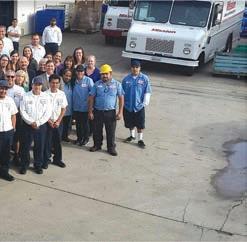
SANTA BARBARA, Calif. — Mission Linen Supply, a provider of linens, uniforms, laundry services and supplies, has received the City of Santa Barbara’s 2017 Water Hero Award, the company reports.

The annual award recognizes individuals, businesses and organizations that go above and beyond in their water conservation efforts and serve as strong examples of resource efficiency in the community.
According to Mission, water conservation and other sustainability efforts have always been an integral part of its business approach. As early as 1973, Mission installed one of the laundry industry’s first wastewater recycling systems. Now, across its 44 locations, Mission says its water conservation efforts save approximately 141 million gallons of water per year.
The company says its Santa Barbara plant alone saves 5.22 million gallons of water annually by using only the minimum amount necessary in the laundering pro-
cess and implementing water reclamation and recycling efforts.

This is the third award Mission has recently received for its dedication to sustainability. The company was also honored with a Sustainability Leadership Award in the Business Intelligence Group’s 2017 Sustainability Awards program, as well as
a silver 2017 Best in Biz Award in the Most Environmentally Responsible Company of the Year category.
“It’s an honor to be recognized for something so near to our hearts,” says John Ross, Mission’s president and CEO. “All of us at Mission are deeply committed to protecting the environment and have
been ever since the company was founded in 1930. We believe it is our responsibility to treat water as the valuable resource that it is, and we’ll never stop looking for new and better ways to conserve.”
Mission Linen Supply has facilities throughout California as well as Arizona, Texas, Oregon and New Mexico. ALN


18 APRIL 2018 | AMERICAN LAUNDRY NEWS www.AmericanLaundryNews.com
Continued
Page 16
from
Healthcare Laundry Richard Engler, CLLM John Peter Smith Health Network Fort Worth, Texas
Textile services provider honored by City of Santa Barbara for water conservation efforts
Mission Linen Supply says its Santa Barbara plant saves 5.22 million gallons of water annually. (Photo: Mission Linen Supply)
a clean sheet
laundry has evolved...
Introducing EvoClean, the world‘s first venturi-based, water-powered laundry chemical dispenser. The system is available in 4, 6 and 8 product configurations with either a low or high flow rate. Its lightweight, compact design features an integrated flush manifold. Compatible with the Total Eclipse Controller, the system can accomodate up to 20 formulas and offers Auto Formula Select to simplify formula selection, as well as reporting capability on chemical usage, production, costs and alarms. There really is no comparison! With no chemical drop-off or deteriorating performance from worn squeeze tubes, EvoClean ensures consistent results and satisfied customers, wash after wash.
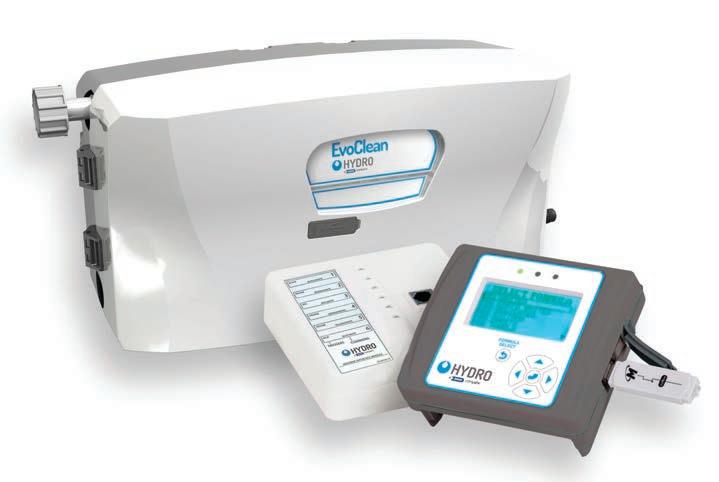
(8OO) 543-7184 www.hydrosystemsco.com
For the informed linen buyer
 BY MARK KELLEHER
FOOTHILL RANCH,
BY MARK KELLEHER
FOOTHILL RANCH,
Calif. —
Familiarizing yourself with a few basic components of textile production can help you choose quality linens every time—ensuring you get the value you’ve paid for and expect. Here, we dispel a few misconceptions about linens, as well as unveil some of the manipulative practices abound in the industry.
WHAT’S IN A THREAD COUNT?
We hear the term all the time,
but what exactly is “thread count”?
Thread count refers to the number of threads running horizontally and vertically in a square inch of fabric. Example: If you have 150 yarns in the warp (vertical) and 150 in the weft (horizontal), voila, you have a T300 sheet.
Once you get beyond 400 threads per square inch, be suspicious. The standard for counting is to add warp and fill threads in a square inch. The most that normally fits in a square inch is 400 threads. Beyond this, the threads are thin-




ner and weaker. Manufacturers use two- or three-ply threads and multiply the count. An 800-threadcount sheet made of two-ply yarn should be legitimately labeled as 400 thread count.

QUALIFYING AS QUALITY
One thing buyers should look for is a product with balanced construction. It’s cheaper for manufacturers to insert more threads in the warp than the weft, but this significantly impacts the quality of the product. A simple way to test for it is to put a product through multiple washings. If the fabric begins to distort, the construction of the sheet isn’t a balanced one.
tomers, whether they are linen rental or COG. Encourage them to involve you in evaluating new textile products. If they feel you want them to succeed and are only interested in being a resource to them, they will welcome you with open arms.
3. All COG contracts need to include a clause that limits the liability of the laundry for any textile products added to the system without the prior knowledge of the laundry. The laundry should not be held
Another important factor to note is the staple size of cotton that determines the quality of a finished product. The staple size is the length of a cotton fiber, and the longer the staple, the more durable and luxurious the end product is.
DOWN TO SIZE
When cotton fibers are being spun into thread, they might be sized, or starched, before they go on a loom to be woven into fabric. Sizing can be done with a natural starch or synthetically. Both have their drawbacks, so why does it happen at all?
During the weaving process, the yarns are subjected to lots of stress
accountable for textile products that are damaged in the process because they are not made to be commercially processed. If you follow these main points, you can avoid a number of problems in the future. ALN
Eric Frederick served 44 years in laundry management before retiring and remains active in the industry as a laundry operations consultant. You can contact him by email at elfrederick@cox.net, by phone at 540-520-6288.
and strain, hence the yarn needs extra strength to avoid yarn breakage during the weaving process. Sizing of the yarn helps to ease this process. It’s suggested you wash the linens prior to use to remove any sizing chemicals or starch.
We wouldn’t suggest synthetic starches, as they are harder to remove and prone to cause issues in the laundering process.
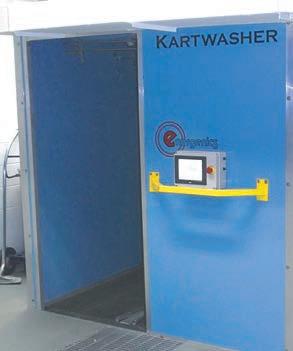
IN SUMMARY
Have a basic understanding of thread count and why any product beyond T400 has likely made sacrifices in quality to attain that number. Know how to identify balanced construction—by running the product through multiple washes. On that same note, always ask for samples before purchasing.
Understand, too, the drawbacks of sizing. You can often tell if a fabric has been sized by placing a drop of water on the surface; if it beads, it may have been starched.
There’s a lot to consider when purchasing linens, but keeping just a few key points in mind can help buyers make informed purchases. ALN
Mark Kelleher is director of marketing for Venus Group Inc.


20 APRIL 2018 | AMERICAN LAUNDRY NEWS www.AmericanLaundryNews.com
Consider thread count, construction, sizing in purchases www.energenics.com 800-944-1711 1470 Don St. Naples, FL 34104 3 TECHNOLOGIES TO SANITIZE ALL BRANDS OF CARTS KARTWASHER PREMIER INTRODUCING 1. GENERATES HYPOCHLOROUS ACID/SODIUM HYDROXIDE, PATENTED INSTANT KILL 2. DETERGENT/QUATERNARY - CHEMICAL/WATER PROCESS—INDUSTRY STANDARD 3. UV LIGHT SANITATION PROCESS DOES NOT REQUIRE WATER OR CHEMICALS • Meets or exceeds national accreditation process for proper treatment of carts • All serviceable components at floor level • Touch screen fully adjustable including maintenance and diagnostics • Washes, Sanitizes & Dries all brands of carts • Water consumption achievableless than 1 gallon/water/cart • Full communication between Kartwasher and Factory • Can be ordered and configurated for any plant layout • Arrives completely factory assembled & tested *NEW LOWER PRICING* Anti-Microbial Fiberglass – Self Cleaning 0418aln_Energenics WILD (Kartwasher).indd 1 3/13/18 2:35 PM the industry and
I was
textile products.
the better
could develop wash formulas and processing procedures for the laundry. 2. Stay in constant contact with your cus-
felt
continuously learning about
The more I knew,
I
Continued
Basics
from Page 4
Unitex supports City of Newburgh, N.Y.
ELMSFORD, N.Y. — Unitex Healthcare Laundry Services, a privately held healthcare laundry business with locations throughout the Northeast, is supporting the city of Newburgh, N.Y., this spring with three communitybased events, the company says.
A big supporter of Big Brothers Big Sisters, Unitex is sponsoring the organization’s largest annual fundraising event—Bowl for Kids’ Sake. Bowl for Kids’ Sake is a fun-filled day of fundraising, bowling and good food for the whole community.
Scheduled for April 8, Big Brothers Big Sisters is hoping to make this year’s event their most successful one yet, and the team at Unitex says it is excited to be a part of it.
Every year, hundreds of thousands of people across the United States come together to have fun and raise money to support Big Brothers Big Sisters, and the Bowl for Kids’ Sake is the perfect way for individuals to make an impact on the community.
All of the funds raised at the Newburgh event will help support Orange County, says Unitex.
for May 20, this event will benefit Newburgh by transforming lives and building community through housing and the arts.
Throughout the years, Unitex says it has been a proud supporter of this event and is excited to help makes this year’s event the biggest and best yet.
“We are happy to be part
of these incredible events for the City of Newburgh and its amazing residents,” says David Potack, president of Unitex. “The City of Newburgh continues to undergo incredible revi-
In addition to supporting Bowl for Kids’ Sake, the company says it is also proud to once again support Safe Harbors of The Hudson.
In honor of Earth Day, and in an effort to inspire and encourage the community of Newburgh to help keep the city green and clean, Safe Harbor of the Hudson will host its eighth annual Newburgh Community Cleanup April 21.
This fun-filled event is open to the whole community and everyone who participates in the cleanup will be invited to a barbecue and recycled art contest at noon.
For a second year in a row, Unitex says it will be donating special padded gloves to all participants in order to keep them safe while taking part in the cleanup event.

Unitex says it is also sponsoring the 12th Annual Off-Broadway 5K & Newburgh Running Festival, organized by Safe Harbors of The Hudson. Slated

talization, and it’s inspiring to see how the community is coming together to help not only each other, but help make the city even better.”
“Your dryers are long-lasting. The PLC control is easy to use, helping to reduce cycle times, considerably.”

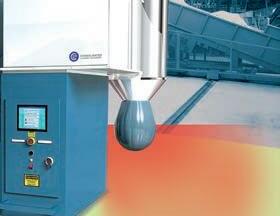
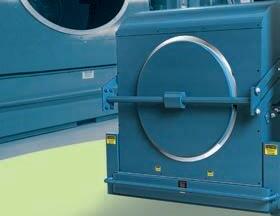
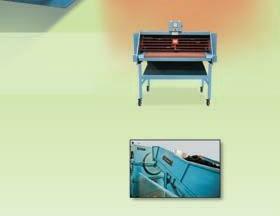

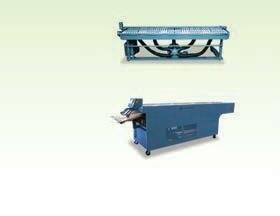
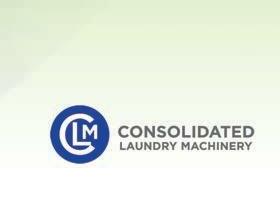
“CLM equipment has a good reputation: sturdy, reliable and e icient.”

“I’m really happy with my CLMs; they’re more than 20 years old and they just keep running.”
Since 1983, the CLM brand has delivered the most cost-e ective, most money-making shuttle conveyors, vacuum feeders, mat rollers, towel folders and its mighty line of 200-1200 lb. dryers. Come to the brand where long-lasting and low-maintenance equipment is standard.
ALN
www.AmericanLaundryNews.com AMERICAN LAUNDRY NEWS | APRIL 2018 21
From the Pacific to the Atlantic, customers rely upon longevity of CLMs Pomona, CA | T:
clmco.com | Visit us at Clean Show booth #3185 Robustly engineered long-lasting DRYERS Smartly productive and safe MAT ROLLERS Intelligently e icient SHUTTLE CONVEYORS Quick and easy-to-use VACUUM FEEDERS Clever and fast TOWEL FOLDERS All CLM equipment can seamlessly integrate into any laundry facility. Made in USA CLM ALN JR Ad April 2018-v2.qxp_Layout 1 2/28/18 5:03 PM Page 1 ALN_Jr Page.indd 1 3/1/18 10:02 AM
(323) 232-2417|
Unitex is sponsoring the 12th Annual Off-Broadway 5K & Newburgh Running Festival,
organized by Safe Harbors of The Hudson. (Photo: Unitex)
Healthcare
laundry business to help bowling, environmental, running events to aid community
“WE ARE HAPPY TO BE
PART
OF
THESE
INCREDIBLE EVENTS FOR THE CITY OF NEWBURGH AND ITS AMAZING RESIDENTS.”
—DAVID POTACK, UNITEX
Generations
It’s wasn’t just Jim saying, “I’m buying a fancy sorting system, and I don’t care what you guys want, I’m going to buy what I want.” No, we were a part of it from the planning process. I’ll never get tired of saying that. I feel like the mom of the sorting system.
Julia: You are the mom of the sorting system.
Miriam: We went to Texas. We went to Michigan. We had everybody involved. It was a team effort. When I go out there and I look at it and I see how involved Julia is, it’s like, this is how it’s supposed to be. Yes, we’re still tweaking it, and we’re still doing certain things, but not one of those is like,
they were constructing this amazing equipment literally over us or next to us. It was like, “Excuse me, we have to go through here,” kind of scenario. But our customers didn’t suffer. We went back to old-school hand-sorting.
Julia: We kept joking that Miriam was going back to her very first job. She understands the things that her team is experiencing, mitigating that for everyone. I think sometimes we take for granted the team and how much planning we do.
Q: You just mentioned the team. We’ve been talking technology here, and some of it can reduce the need for employees, but what’s your take on the need and value of laundry employees?
Julia: I think the value is in your people. Investing in your people and having a fabulous team.
some people are more comfortable working on computers, then those people ended up working in a different area. Some people are not so comfortable working on computers, and those people are now in a different area.
Q: There is one aspect of technology that we can’t ignore: The internet. What is your perception of the internet and social media in terms of the laundry/linen service industry?
Julia: This goes back to what I was saying about my dad always loving computers and technology. I feel like we’ve always been using the internet for things. We keep updating our website.
I feel like we are very focused on trying to make sure we are technologically advanced and staying to the level at least that our customers expect, but we’d rather exceed it.
Q: Last question: Where do you see the laundry/linen service industry going in the future?
Miriam: With technology at the rate we’re going, more efficient, obviously. In a lot of cases, you’re always going to have the human factor in there. No matter how fancy or sophisticated you get, you’re still going to have a person at some point, because you still need that personal touch.
At the end of the day, that affects the product that you’re processing through. I just see it helping us run more efficiently and better.
“There you go, Miriam, it’s your problem. You got the new toy.” She’s the brains.
Julia: I love investigating why this happened or this happened with it. There’s always growing pains when you put in a new piece of machinery. It takes adjustment to fully optimize it within your facility to make sure all the technical specifications are working, everything. It takes a little bit of time. We’re going through that right now, but I think Kannegiesser ETECH has been good at helping us through that process. The system started sorting garments the first week of December. Before that, Miriam and her whole team were hand-sorting for a period of time or doing a first sort with an old automated piece while construction went on in a different area. Everyone got involved.
Miriam: It was all hands on deck while
Despite the fact that we’re automating, we’ve been around over 95 years. We’ve had people who have been here for a long time and who have retired. As people have retired, they’ve been planning. They know we’re going to get this sorting system, so we’re going automate more, so that’s going to reduce how many people we have to work on this, so when this person retires, we’re going to fill that with a temp for now.
Miriam: We strategically did that years in advance. We knew exactly what we were doing. Going back two years, it was, “Let’s find some good, reliable temps we can work with. Who knows? Maybe we’ll end up hiring them.” Everything fell into place. Even though we did go through this awesome automation, we didn’t have to lay off anybody.
There are key jobs where you don’t want to have to put a temp in. Our key team members were fully cross-trained across the board. You have to make sure you take care of that area. We reestablished our team members internally to be more efficient and it goes to what people are talented with. If
I’m probably not the best person to ask about social media. I feel like I’m a little bit of a slow adopter. I got on Facebook when they opened it up to more than just college email addresses. I’ll go on Twitter, but I don’t have a Twitter account. I don’t have an Instagram account.
Q: How about you, Miriam?
Miriam: I’m like Julia in that respect. I don’t even have Facebook. I hear some of the team members talk about it, about something that was posted, so now I’m contemplating the idea of thinking about it, only because it has piqued my curiosity of what they’re talking about. It’s another way I can be connected to them and read what they’re posting and saying and doing.
I look at our company’s posts, especially now that we’ve been having meetings on it, and I’ve been reading our blogs. Again, the company’s driving me that way. I’m growing within the company, even in that respect.
Julia: I’ll go on Twitter. It’s a great source of breaking news, I feel like. Twitter has so much more information even before the news outlets have it.
Julia: I don’t know. I went to TRSA’s Executive Management Institute (EMI) this past year, and one of our exercises that we had was brainstorming and thinking about different trends that could happen in the industry as there is more and more focus on reusing and natural resources.
People in my generation care more and more about the environment, and I think Roscoe, and the industry, have always focused on the fact that reusable items—part of that old recycling symbol—are better than something that’s disposable.
At EMI, some of the things we started wondering was, somebody brought up, will the same type of chemistry be in detergents in the future, or, like we see people turn to
essential oils, will they start going toward more ideas like that for cleaning?
I would say the future I see is more shaped off of that conversation and related to the importance of reusing merchandise and textiles and using the water as efficiently as
can, making sure people know, all your customers and your wearers, know the care that’s being taken with their garments. ALN
UniFirst Corp. earns Silver Stevie Award at annual event
service.
OWENSBORO, Ky. — UniFirst Corp., which provides customized work uniform programs, corporate attire and facility service products, was presented with a Silver Stevie® Award in the Best Use of Technology in Customer Service category at the 12th annual Stevie Awards for Sales and Customer Service, the company reports.
The awards were presented to honorees during a gala banquet Feb. 23 at Caesars Palace in Las Vegas. More than 600 executives from the United States and several other nations attended.
Stevie Awards for Sales and Customer Service are considered the world’s top honors for customer service, contact center, business development and sales professionals, says UniFirst. The
Stevie Award group organizes several of the world’s leading business award programs, including the prestigious American Business Awards SM and International Business Awards®

UniFirst says its centralized customer service team, located in Owensboro, is responsible for answering and attending to thousands of customer email and telephone inquiries each month.
The company’s silver-winning technology, called Ask IRIS (Informational Resources Instantaneously Supplied), was developed in-house by a UniFirst customer service representative.
It is a proprietary knowledgebased information management system designed specifically to improve overall customer
“At UniFirst, customer satisfaction is our number-one priority and a key to our 82 years of success,” says Bethany Johnson, UniFirst customer service manager. “Our goal with this new technology was to measurably improve upon our call center’s email and telephone customer response rates to ensure our customers are consistently getting immediate attention to all of their questions and concerns.
“Ask IRIS equips our customer service representatives with onestop, instant access to important customer account information that allows us to instantly address most customer needs with just the touch of a button.”
UniFirst says customer service representative Jennifer Burden developed the proprietary system with minimal help from the company’s corporate IT department.


According to Johnson, working in a busy call center gave Burden a front-line perspective of what customers really need.
“One day the idea just hit me,” says Burden. “I walked into my boss’ office and asked if I could develop a system to centralize all of our customer information to cut down on the time it took to pull all the information from the many different locations on our server. She gave me the green light, so I worked with a blank platform that our IT group provided, and I wrote the rest of the program myself. And, that’s how Ask IRIS was born.”
Ask IRIS has had an immediate impact on improving overall customer satisfaction, the company says. Both telephone and email response rates have increased to 99.2% since implementing the system. Call-handling times have been reduced by an average of 16

seconds, and with an incoming call volume of about 5,000 per month, that saves the team more than 21 hours of call-handling time monthly. This allows UniFirst customer service representatives the ability to provide exceptional customer service and results in thousands of satisfied customers.
According to Johnson, “Our customers couldn’t be happier with our team’s ability to efficiently service their accounts and we’re extremely proud of that.”
More than 2,500 nominations from organizations of all sizes and in virtually every industry were evaluated in this year’s competition. Winners were determined by the average scores of more than 150 professionals worldwide in seven specialized judging committees.
UniFirst says this is the second award in just three years it has won for customer service. ALN
22 APRIL 2018 | AMERICAN LAUNDRY NEWS www.AmericanLaundryNews.com
Continued
Page 6
we
from
“I LOVE INVESTIGATING WHY THIS HAPPENED OR THIS HAPPENED WITH (THE NEW SORTER). THERE’S ALWAYS GROWING PAINS WHEN YOU PUT IN A NEW PIECE OF MACHINERY.”
—JULIA BUIK
“NO MATTER HOW FANCY OR SOPHISTICATED YOU GET, YOU’RE STILL GOING TO HAVE A PERSON AT SOME POINT, BECAUSE YOU STILL NEED THAT PERSONAL TOUCH.”
—MIRIAM AVILA
Uniform provider honored for use of technology in customer service
PHILADELPHIA — Aramark, a global company in food, facilities management and uniforms, has been named a top 50 company in two categories by influential publications, the company reports.
It was once again named one of the top 50 companies for diversity by the magazine BLACK ENTERPRISE for its professional inclusion of people from all races and demographics. In addition, Aramark has been named a top-50 employer for its diversity and inclusion efforts for people with disabilities by CAREERS & the disABLED magazine for the fourth consecutive year.
BLACK ENTERPRISE is a business, investing and wealthbuilding resource for AfricanAmericans. The magazine surveys the top 1,000 publicly traded companies, as well as the 100 leading global companies with strong U.S. operations. The qualitative survey focuses on activities related to the participation of African-Americans and members of other ethnic minority groups in four categories: employee base, senior management, board of directors and supplier diversity.
“We are honored to be recognized by BLACK ENTERPRISE for creating a workplace culture of diversity and inclusion,” says Lynn B. McKee, executive vice president of human resources for Aramark. “We share this honor with our 270,000 team members who proudly represent the many different backgrounds, perspectives, talents, beliefs and values that fuel the success of our company, clients and communities.”
In February, Aramark says it launched a new employee resource group (ERG), Aramark LEAD, which stands for Leaders & Employees of African Descent. The ERG is dedicated to the interest of employees who self-identify as black, African-American, West Indian or of African descent.
LEAD’s vision is to cultivate black leaders within the company, empower the communities in which Aramark operates, and push innovation in the service industry. Membership is open to all team members, regardless of race or ethnicity, the company says.


CAREERS & the disABLED is the first and only career-guidance and recruitment magazine for people with disabilities in the nation. Each year, readers of CAREERS & the disABLED selects the top companies in the country they would most prefer to work for, or believe provide a positive working environment for people living with disabilities.
“We are proud to once again be recognized as a top employer,




















providing people with disabilities with an encouraging environment where they can succeed and thrive,” McKee says. “We greatly appreciate the valuable contributions of our team members with disabilities who enrich our vibrant workplace culture through their unique abilities, backgrounds and experiences.”
As part of its diversity and inclusion initiatives, Aramark








says it partners with several organizations that support disability inclusion and development, including Bridges from School to Work, a program of the Marriott Foundation dedicated to transforming the lives of young adults with disabilities by assisting them




in finding fulfilling work.



The company also partners with the U.S. Business Leadership Network (USBLN), a national non-profit that helps businesses derive performance by leveraging disability inclusion in the workplace, supply chain, and marketplace. The USBLN serves as the collective voice of nearly 50 Business Leadership Network affiliates across the United States,







efforts









representing more than 5,000 businesses.





Last year, Aramark received a top score of 100% for the 2017 Disability Equality Index®, a joint initiative of the USBLN and the American Association of People with Disabilities (AAPD) to connect inclusive companies with people and organizations within the disability community. ALN

www.AmericanLaundryNews.com AMERICAN LAUNDRY NEWS | A PRI L 2018 23 KANNEGIESSER-ETECH.COM • (612) 722-1366 What’s my PPOH? Will we have to work overtime? Who’s working Ironer 2? When will we finish St. John’s order? Where are my sheets? eVue anywhere. Because you can’t be everywhere. PRODUCTIVITY ATA EQUIPM NT / / What should maintenance be working on? ALN_Jr Page.indd 1 1/10/18 4:11 PM
50 company for diversity, inclusion
Aramark named top
Track Career
Colmac promotes Shamion to president
COLVILLE, Wash. — Colmac Industries Inc., a provider of garment finishing equipment, automated soil sorting and counting, and heat pump water heaters, has promoted Justin Shamion to president, reports Scott McMillan, CEO and owner.
Shamion has been with Colmac since 2006 and has held positions in production, operations and sales, according to the company.
His background includes a master’s degree in business administration from Eastern Washington University. Most recently, he has been representing Colmac as a vice president overseeing sales, marketing and administration, the company says.
Shamion succeeds Cam Buffington, who will continue to sit on the Colmac board of directors while assisting with future business development.
Kemco Systems hires Southwest regional sales manager





CLEARWATER, Fla. — Kemco Systems, a global water and energy technology company, has added Stephen Stewart as its regional sales manager for the Southwest, the company reports.
Prior to joining the Kemco team, Stewart
spent 18 years with U.S. Filter. Beginning as a branch manager, Kemco says Stewart quickly learned the technology and started engineering and selling water and wastewater systems. A short time later, Stewart moved into the regional sales manager position for the Southwest territory at U.S. Filter.
Kemco says Stewart’s expertise and passion for providing solutions to his customers’ water and wastewater needs matches the company’s mission to provide the most efficient and highest-quality systems in the industry while providing the best service and support available.
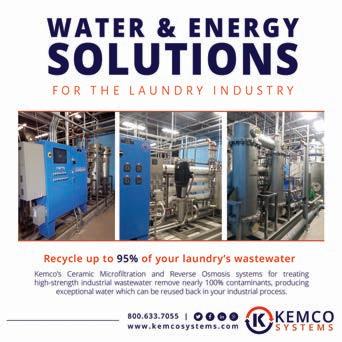
Stewart resides in Colorado with his wife, college-aged twins and two dogs. They enjoy biking, hiking and skiing in the mountains, but their true vacation is always the beach.
ABS Laundry Business Solutions appoints new U.S. sales manager
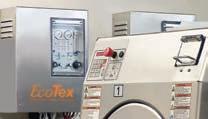
TUCKER, Ga. — Global laundry management and route accounting software provider ABS Laundry Business Solutions says it has appointed Garret Snater as its U.S. sales manager. Snater will lead sales activities in line with the business’ growth plan to achieve further success within North America.

Snater brings 15 years of experience to the role gained from holding various positions within the industrial laundry sector, including general manager and director of operations, the company says. He has a


wide range of knowledge in the U.S. textile rental market, with particular strengths in uniform and cleanroom business lines.

“We are thrilled to welcome Garret on board as our new sales manager in the U.S.,” says Gerard van de Donk, managing director. “He brings with him a huge wealth of experience, as well as familiarity with the U.S. market and extensive insight into the operational needs of modern industrial laundries.”
“ABS has a solid product offering and is (a) well-respected company that unlocks the full potential of each one of its customers,” says Snater. “I’m excited to have the opportunity to contribute to the continued success of ABS Laundry Business Solutions as a market leader here in the U.S.”
Braun appoints Kidney commercial director for Asia-Pacific region

SYRACUSE, N.Y. — David Kidney has joined G.A. Braun Inc. as commercial director for Braun’s Asia-Pacific region, reports James Dee, Braun’s director, AsiaPacific.
“David has been an industry friend for a number of years, and we are very pleased that he has joined our team,” says Joe Gudenburr, Braun’s president. “He brings a wealth of knowledge (technically and professionally) and is a consummate professional well-versed in the markets he will have responsibility for.”
The company says Kidney has a lifetime of experience in the hospitality industry. Beginning as a professionally trained chef, he soon became projects director for a large kitchen equipment supplier and then managing director of a food service laundry design practice located in Bangkok.
Most recently, Kidney was vice president of a Singaporebased kitchen equipment company.
Braun says he has lived and worked in Southeast Asia for the past 25 years. In addition to his native English, he has a working knowledge of Bahasa Indonesian, Malay and Tagalog.
According to the company, he has gained an impressive understanding of laundry equipment and the hotel laundry environment.

Kidney will be based in-region, Braun says.
“This addition is one more step along our strategic path to growing our presence in the international markets that we supply,” Gudenburr says. “We are confident that David will play a big role in our ability to advance strategic service and commercial initiatives within the region.”
MONTREAL — MIP Inc., a provider of healthcare textiles, has appointed Joseph Marcogliese as USA product manager, the company reports.
MIP says Marcogliese brings many years of product management experience, most recently with Brother Inc., where he worked all aspects of product management from conception to launch.

MIP Inc. appoints Marcogliese USA product manager
24 APRIL 2018 | AMERICAN LAUNDRY NEWS www.AmericanLaundryNews.com
Kidney
Snater
Marcogliese
Stewart ALN_3rd Page.indd 1 3/5/18 8:58 AM ENERGY EFFICIENT LAUNDRY TECHNOLOGY Clean the Green Way Retrofit an EcoTex cold-water washing system to your existing commercial on-premise washer or our Point-of-Entry (POE) system to your coin-op facility, and let the savings begin. EcoTex Series of disinfection systems provide eco-friendly laundry systems that turns cold water into activated oxygen, nature’s safest, most effective, disinfecting agent for commercial laundries. SERVING BOUTIQUE TO FULL-SERVICE HOTELS 2 to 25 lbs. 3.5 to 12 kg NatureWash 25 to 50 lbs. 12 to 24 kg NatureWash-HD 50 to 1,000 lbs 24 to 455 kg EcoTex Up to 40 gpm Point-of-Entry OZONE LAUNDRY LINE ENERGY EFFICIENT & QUICK RETURN-ON-INVESTMENT • SUPERIOR WASH QUALITY ROI IN 8-18 MONTHS COLD WATER WASH REDUCE HOT WATER ENERGY • REDUCE WATER • REDUCE CHEMICAL USE • REDUCE DRYING & CYCLE TIMES FRESHER SMELLING LINENS Contact us for details and pricing 800.262.0203 | 805.549-9724 sales@ecotexozone.com | ecotexozone.com ALN_3rd Page.indd 1 3/6/18 2:32 PM
Shamion
The company says Marcogliese will be responsible for managing product strategy for the USA division, collaborating with product development, manufacturing, sourcing and marketing.
“We very pleased to welcome Joseph on board,” says Mark Mann, vice presidentUSA Business Unit. “We are confident that by adding Joseph to the team, we will continue to strengthen our position in the important business channels in which we serve. And we are equally confident that MIP customers will substantially benefit from Joseph’s experience in product management.”

ALS promotes Cooley to senior project engineer


HAVERHILL, Mass. — Deven Cooley has been promoted to senior project engineer for American Laundry Systems (ALS), according to the company.
ALS says Cooley has been working with the company as project engineer and site superintendent for more than seven years under the guidance and supervision of CEO Gerard O’Neill.

“We want to congratulate him on his promotion, and we are delighted that he will be taking over this position previously held by Meeraj Mehta,” O’Neill says. “Meeraj has decided to explore other opportunities
within the industry and has been a great asset to us all here at ALS over the years, and we sincerely wish him all the best in his new endeavor.
“Furthermore, we are thrilled to have Deven take responsibility for the engineering department here at ALS.”
Obiols joins Continental as sales, product engineer

OSHKOSH, Wis. — Continental Girbau Inc. recently welcomed Sergi Obiols, of Vic, Spain, as sales and product engineer, the company reports.
In his new role, Obiols provides technical sales support for Girbau Industrial laundry equipment projects throughout North America. Most recently, Obiols was part of the industrial design team at Girbau Global Laundry Solutions in Vic.
“Our goal of improving turnaround time in laundry design layout required filling an inside sales engineering position,” says Dave “Mac” McAllister, director of services and product management. “Fortunately, Sergi Obiols was available directly from Girbau.
“Sergi has global industrial laundry experience working on large projects, from concept through construction. He will be involved in all aspects of presale project support.”
As sales and product engineer, Obiols

handles equipment sizing, estimated production rates, equipment layout and scale drawings, as well as monitoring target installation dates and project completion. With time, his position will support commercial laundry design projects for all Continental brands, according to McAllister.
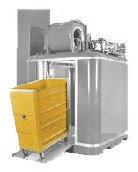
Obiols holds a bachelor’s degree in mechanical engineering from Politechnic University of Catalonia in Barcelona.
JENSEN USA welcomes Garnier, Giancola to staff
PANAMA CITY, Fla. — JENSEN USA Inc. has hired Alain Garnier as manager of parts and service and Craig Giancola as regional sales manager for the Northeast U.S., the company reports.
Garnier comes to JENSEN USA with a strong background of high-level customer service where he has held several positions in similar functions with international companies, most recently as director of product and customer support with Volvo Penta, a Swedish manufacturer of internal combustion engines (ICEs) and complete power systems to the marine industry.
Prior to that, JENSEN USA says he worked with other international companies, such as Volkswagen, Mercedes-Benz and Chrysler. Garnier holds a bachelor of


science in marketing and international business from the University of Florida, and an MBA from Wayne State University.
JENSEN USA says Giancola will be responsible for supporting equipment sales in the states of Connecticut, Maine, Massachusetts, New Hampshire, New Jersey, New York, Pennsylvania, Rhode Island and Vermont. He brings more than 25 years of laundry industry sales experience, most recently as Northeast regional manager for Venus Group textiles.
Prior to that, he owned and operated a laundry equipment distributorship and has built OPL laundries, Laundromats and drycleaning plants throughout the Northeast. In addition, he has held sales positions for two laundry equipment manufacturers.

The company says Giancola is a wellrespected industry veteran who is looking forward to applying his vast equipment knowledge in support of JENSEN customers. He holds a bachelor of science degree in marketing and business administration from St. Joseph’s College in Indiana.
“Alain and Craig are tremendous additions to the JENSEN USA team,” says Simon Nield, company president. “We are constantly striving to improve the customer experience—having a team of professionals is an integral part of that process.”
WHY WATER TUBES ARE BETTER
BOILER EFFICIENCY. The Parker is one of the most efficient boilers on the market today. The 8 to 12 pass water tube design provides a much larger heating area to maximum heat transfer compared to tubeless designs.
LONGER LIFE. Our tubes are double the thickness of standard tubes and our steam drum at 1/2” is 50% thicker to resist corrosion, the tubes flexibly expand and contract to prevent warping and leaking, and can be easily flushed instead of manually cleaned. Some Parker Boilers have been in continuous service for 40 years without experiencing a service problem.
SAFETY. The heavy construction and the flexible design make it one of the safest boilers in the world. The low water volume of the Parker design stores much less pressure energy than tubeless designs so explosions are highly improbable. To our knowledge, no Parker has ever exploded, even when injected with cold water. Please don’t try that with a tubeless boiler.
VARIABLE OR MODULATING FIRING. All Parker Steam Boilers* are provided with either full modulation or variable firing to prevent cycling and save fuel. The majority of tubeless boiler manufacturers provide only on-off firing or LHL as standard.
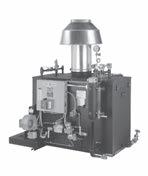
*Except model 103-9.5 LA Available as an option on 9.5L and 15L.

www.AmericanLaundryNews.com AMERICAN LAUNDRY NEWS | APRI L 2018 25
Cooley Obiols Mentor, OH 44060 • Ph: 440-257-6453 • Fax: 440-257-6459 • Email: downassoc2@oh.rr.com Spring 2018 Issue - 1/4 pg ad news
solutions
Covering infection prevention, medical waste management & sustainable practices McClure Industries, Inc. 800-752-2821 fax 503-775-2828 Sani-Trux Call 800-752-2821or Fax 503-775-2828 or Email sanitrux@mcclureindustries.com for McClure Industries, Inc. and Sani-Trux • Sani-Trux is the only molded cart to pass rigorous independent laboratory testing for NFPA re codes. • Made of durable berglass making the cart life at least twice that of a poly cart. • Easy to maneuver even in tight spaces. • Built with quality components to last years longer than other carts. T IM E TO O RDER ALN_Jr Half.indd 1 3/15/18 1:14 PM PARKER BOILER’S “WATER TUBE ADVANTAGE” #1
Environmental
healthcare
Parker Boiler Company • 5930 Bandini Boulevard, Los Angeles, CA 90040 Phone (323) 727-9800 • Fax (323) 722-2848 • www.parkerboiler.com
ALN_Jr Half.indd 1 3/9/18 8:51 AM
Garnier
See CAREER TRACK on Page 30
Giancola
General Manager






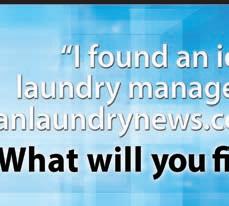
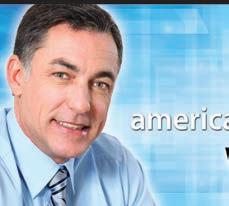





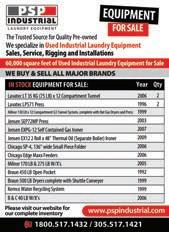
26 APRIL 2018 | AMERICAN LAUNDRY NEWS www.AmericanLaundryNews.com Classified Advertising The Griffin Group, Inc. “Recruitment Specialist” Need to FILL a position? Call Deana Griffin 888-235-2365 www.thegriffingroup.cc deana@thegriffingroup.cc ® American LaundryNews .com More than unique visitors monthly! 5,250
SALE PARTS, PARTS, PARTS Huge stock of parts for most laundry equipment & boilers. Also traps, valves and lubricants. Overnight delivery. Steiner-Atlantic, 800-333-8883 Fax: 305-751-8390 parts@steineratlantic.com www.steineratlantic.com
For
85
Linen has
market
linen
rentals.
passionate leader to build, develop and actively manage
in
customer relations and
service
Qualified candidates should
in
Department: careers@mickeyslinen.com EQUIPMENT FOR SALE EQUIPMENT FOR SALE NEW FOLDERS & SELF CONTAINED IRONERS 68” - 138” Wide WWW.JBILAUNDRYFOLDER.COM AMKO AMERICA INC. Parts, Supplies, Service Remanufactured Finishing Equipment AmkoAmerica@gmail.com 561-863-9696 FOR MORE CLASSIFIEDS, VISIT: WWW.AMERICANLAUNDRYNEWS.COM DISTRIBUTOR OFFERINGS Stanco Industries, Inc. Serving The Textile Trades Since 1970 800-932-3769 k for Mike or Deb KEEPING IT GREEN SINCE 1970 EQUIPMENT FOR SALE AquaRecycle Water Recycling System 2008 Braun Dryer Gas 400# 2000 Braun Dryer Gas 400# 2007 Chicago Lintbuster 2012 Chicago Feeder 2000 Chicago Folder 2012 Chicago Folder 1999 Elgi Screw Air Compressor 2013 SPX Air Dryer for Compressor 2013 Felins Tye Wrap Pac-Tyer 2000 Rail System 4 Wheel, Double Sling Photos on website under Laundry Equipment/Liquidation Visit our website: www.stancoind.com E-mail: buyer@stancoind.com POSITIONS AVAILABLE Call Craig Lloyd toll free at 877.295.5693 between 9 a.m. – 9 p.m. EST. Please visit www.laundrycareers.com to review current industrial/institutional laundry management openings. ADVANCE YOUR CAREER DESCRIPTION FOR NEW OR USED LAUNDRY EQUIPMENT, DM IS YOUR SOURCE FOR ALL YOUR NEEDS Challenge Reconditioned Pacesetter Gas Dryers (1) Kemco (2) Stainless Steel Storage Tank 1500 gallon and Two Pass Heat Reclaimer Pik-Quik Sheet Sorter (1) Braun Return to Feed SPF Skyline Mini (2009) with Stacker Jensen Reconditioned 2-Roll 36 Steam Ironer Chicago Edge Spreader Feeder (2001) Milnor 72072 500lb Gas Pass-Through System Dryers (2006) (2) Milnor 140lb Solid Mt Washer 42026V6J Rebuilt (2002) Milnor 42026X7J – 140lb Washer Milnor (2) 30022M5J – 60lb washers Unipress ABS Sleever & 3CTZ Collar Cuff Unipress CRD Rotary Double Buck Chicago Carousel 5 Lane Accumulator Washex FLS600 – 135lb Soft Mount Washer For Pricing call Ron Hirsch 516.938.4300 • 516.315.7426 Hicksville, NY • www.directmachinery.com 2009, 1996, Air Chicago Small Piece Folder (Qty. 2) 2011 Chicago Air Express 1998 Chicago Air Chicago XL 2014 Chicago 232 Imperial 120” Gas Ironer 2006 Chicago Tristar 32PCS 120” Steam Ironer/Folder/Stacker 1996 Chicago Tristar 24 PCS 120” Gas Ironer/Folder/Stacker 2002, 1999, 1999 Chicago Comet 66” Gas Ironer (Qty. 3) 2004 Chicago Imp. 36 Gas Ironer With Front or Rear Return 2000 Chicago GL13-120R Gas Ironer With Rear Return 2009 Milnor 36026V5J 100LB Washer 2002 Milnor 36026V7J 100LB Washer (Qty. 2) 1996 Milnor 42026Q6J 135LB Washer 2008 UniMac UW100 100LB Washer 2010 Speed Queen SC80 80LB Washer 2013 Cissell 75LB Soft Mount Washer 2010 Milnor 60LB Washer (Qty. 2) 2009 Milnor/ADC 75LB Gas Dryer, Reversing (Qty. 5) 2008 Huebsch 170LB Gas Dryer (Qty. 2) View photos of entire inventory at www.washburnmachinery.com 800-245-8425 Keepin’ it clean for over 65 years! 250lb Braun OP, 2 way tilt, 2015 (2) 190lb Milnor Dryers 300lb Milnor Tunnel Dryer (6458) w/ lint collector, 2008 2008 Milnor Stationary Shuttle 100lb Milnor Washer, 2008 (2) 60lb Milnor Washer, 2008 & 2010 40lb Milnor Washer, 2012 75lb Milnor Gas Dryer, 2008 2014 PDPI Mat Roll Machine 275lb Milnor W/E, 2003 (2) 165lb Milnor W/E (2) Chicago IMP48 Gas Ironer (2) Chicago Tristar28 2009 Chicago Skyline 4 Lane 2003 Chicago Mini 200HP Superior Boiler w/TEA Stack Economizer, Water Tanks etc. Equipment is priced to sell! www.ineedjpequipment.com www.ineedjpequipment.com “Expect Excellence” POSITIONS AVAILABLE
PARTS FOR
Assistant
more than
years, Mickey’s
been a
leader in
& uniform
We’re looking for a
a strong team while working alongside the General Manager. The Assistant General Manager will assist
maintaining and managing
assist in overseeing the
and plant operations while working with their respective management teams. The Assistant General Manager aids in developing, training and mentoring of department managers and supervisors.
email resumes
confidence to our HR
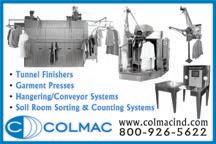
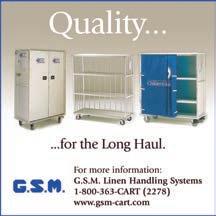









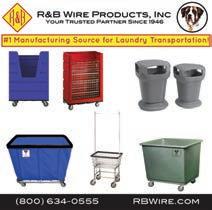
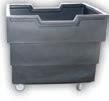










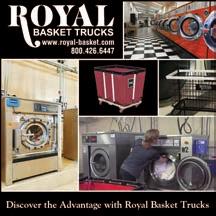















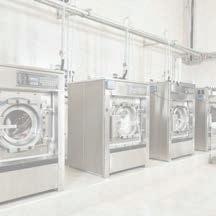


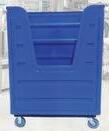
www.AmericanLaundryNews.com AMERICAN LAUNDRY NEWS | APRIL 2018 27 Source Directory A convenient guide to sources of products and services APPAREL FINISHING CARTS, TRUCKS & BASKETS Source Directory listings in American Laundry News are sold on an annual basis at the following rates: All Major Credit Cards Accepted 2018 Listings Regular Boldface All Caps Four Line Listing per Year $900 $1,130 $1,130 Display and additional line rates available upon request CARTS, TRUCKS & BASKETS CARTS, TRUCKS & BASKETS ● Folder Stackers ● Tunnel Finishers ● Cart Washers ● Pressing Equipment ● ● ● ● ph: 704.483.9316 sales@leonardautomatics.com http://leonardautomatics.com Financing Available Laundry/Bushel Trucks • Exchange/Flare/Security Carts • Spring Lifts Diversified Plastics, Inc. South Carolina & Georgia • 800.768.7636 sales@dpirotocarts.com • dpirotocarts.com On-Time Delivery & Quality Service! BEST LAUNDRY TRUCKS & CARTS BEST LAUNDRY TRUCKS & CARTS M c C LURE INDUSTRIES, INC. 800-752-2821 • www.mcclureindustries.com email: kim@mcclureindustries.com Sani-Trux is the only molded cart to pass rigorous independent laboratory testing for NFPA fire codes Made of durable fiberglass making the cart life at least twice that of a poly cart Easy to maneuver even in tight spaces Built with quality components to last years longer than other carts Visit our website for other models and avaliable options. We sell direct to all parties! M.I.T. POLY-CART 211 CENTRAL PARK WEST, NEW YORK, NY 10024 800-234-7659, FAX: 212-721-9022 WWW.MITPOLYCART.COM BULK DELIVERY TRUCKS l-800-275-2436 l-800-275-2436 maxi-movers.com Email:sales@maxi-movers.com Rugged, non-marring trucks in 14 sizes up to 84 cu. ft. capacities. Need to deliver hanging garments? Ask about our removable, adjustable hanger bars for Bulk Trucks! M7070 M7084 Chm #9964 ALN Bulk DEl '18.qxp_Layout 1 3/1/18 1:38 PM Page 1 Call 800.829.4535|questions@MODROTO.com | MODRoto.com 54P-40E We Put More Into Our Carts So You Can, Too! SPRING-LOADED SAFETY TRUCKS Show your commitment to worker safety with ergonomic, spring-loaded carts and trucks from the spring-loaded technology leader. Our signature, rotationally molded and vinyl-covered spring platforms rise as goods are removed to keep work positioned at the right height. See action video at MODRoto.com and call for free quote. FIBERTECH LAUNDRY TRUCKS 800.304.4600 www.FIBERTECHINC.net We Create Environmentally Responsible Solutions EXpect CHANGEa VISIT www.AmericanLaundryNews.com



























28 APRIL 2018 | AMERICAN LAUNDRY NEWS www.AmericanLaundryNews.com Source Directory A convenient guide to sources of products and services FLATWORK IRONERS Knowhow In Action Your Tingue rep is a fully trained master of finishing equipment operation, maintenance and installation. Call for: • Pads, covers, belts, waxes, tapes and more • Carts, trucks, baskets and bags • Parts, rebuilds and repairs 800.829.3864 www.Tingue.com MODRoto.com TBR-Associates.com C & W EQUIPMENT (800) 443-3573 FLATWORK IRONER SPECIALISTS REMANUFACTURED IRONERS: Super Sylon Sylon Hypro’s Super Pro Jensen SS700 SS800 Ultima Lavatec UPGRADE KITS: Chain Drive Conversion Vacuum Systems Herringbone Conversion Canopies Inverters Side Covers Roll Springs Jensen Drives SUPPLIES: Aprons Pads Covers Belts Waxes Cleaners PARTS/REPAIRS: All Brands New/Refurbished/Hard to Find COMMITTED TO EXCELLENCE Pellerin Milnor Corp. P.O. Box 400, Kenner, LA 70063 504-467-9591, Fax: 504-468-3094 www.milnor.com DRYERS – 100 POUNDS OR MORE Pellerin Milnor Corp. P.O. Box 400, Kenner, LA 70063 504-467-9591, Fax: 504-468-3094 www.milnor.com CLEAN CYCLE SYSTEMS 960 Crossroads Blvd., Seguin, TX, 78155 800-826-1245 • CCsystems@tqind.com www.cleancyclesystems.com DRYERS – 100 POUNDS OR LESS LINT COLLECTORS & FILTERS MAT ROLLERS DRYER BOOSTER & EXHAUST FANS Gardner Machinery Corporation P.O. Box 33818, Charlotte, NC 28233 Ph.: (704)372-3890; Fax: (704)342-0758 www.gardnermachinery.com MATERIAL HANDLING / CONVEYORS americanlaundrynews www. .com www.energenics.com ENERGENICS CORPORATION TALK TO OUR DESIGN AND ENGINEERING STAFF ABOUT YOUR NEEDS 1470 Don St. • Naples, FL 34104 • 800-944-1711 ›› Our In-Line Lint Filter mounts inside, saves space! ›› OPL Duct Mounted Lint Filters 1,000 to 2,700 CFM ›› Fiberglass or Stainless Steel Dry Filters ›› Hundreds Sold Annually Source Directory listings in American Laundry News are sold on an annual basis at the following rates: All Major Credit Cards Accepted 2018 Listings Regular Boldface All Caps Four Line Listing per Year $900 $1,130 $1,130 Display and additional line rates available upon request HEALTH CARE LINEN TRANSPORT CARTS “In-House” or “Over-The-Road Transport” Ergonomic Aluminum - Tough Fiberglass – Ultimate Stainless ALL SIZES & CUSTOM C APABILITIES 800-826-1245 | www.tqind.com | TQcarts@TQind.com America’s #1 Trusted Source Since 1961! HEALTHCARE LINEN TRANSPORTS www.energenics.com ENERGENICS KARTWASHERS FULLY AUTOMATIC KARTWASHER PREMIER W/TOUCHPAD 1470 Don St. • Naples, FL 34104 • 800-944-1711 Designed to wash and sanitize all popular laundry carts • Automatic two minute cycle • Dries and sanitizes • Minimum water useage Concentrates wash effectiveness on the cart interior Fast automatic washing, sanitizing and drying insure optimum cleaning • 15 second detergent wash and sanitizing rinse cycle • Adjustable automotive car wash style drying 1116aln_Energenics Cart Washers SD.indd 1 9/27/16 3:30 PM OPL-Series DLF-500 Lint Lasso 1,000-10,000 CFM Established: 1991 4,000-35,000 CFM Established: 1985 4” to 18” Duct Established: 2011 www.cleancyclesystems.com • 800 . 992 . 0697 www.olekbelts.com 1-800-869-2683 Free www.olekbelts.com We’re your flatwork finishing and conveying O.E.M. Belt Match H.Q. Get the real thing for a Lot less $$$. O.E.M. Needlefelt Ironer Pads too! Better Belts, Better Prices, Better Service Visit our Website or Call 1-800-869-2683 For free, no obligation, price quotations and for your Free copy of our Product Catalog with over 40 samples. Ironer pads, covers, aprons, guide tapes, carts, slings, cleaners, waxes & more… FLATWORK SUPPORT CART-WASHING SYSTEMS What Every Laundry Needs In A Cart Washer: M c C LURE INDUSTRIES, INC email: kim@mcclureindustries.com 800-752-2821 • www.mcclureindustries.com A cart washer that works continuously for 15-20 years. The ability to install your cart washer in a cross-contamination barrier wall. A cart washer that really, truly cleans each cart of bio-contaminents inside and out. One that uses existing utilities - no remodel costs. Time selectable efficient cycles that use a minimum amount of water.
Pellerin Milnor Corp. P.O. Box 400, Kenner, LA 70063 504-467-9591, Fax: 504-468-3094 www.milnor.com









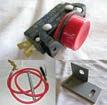
Pellerin Milnor Corp.
P.O. Box 400, Kenner, LA 70063 504-467-9591, Fax: 504-468-3094 www.milnor.com
Pellerin Milnor Corp.
P.O. Box 400, Kenner, LA 70063 504-467-9591, Fax: 504-468-3094 www.milnor.com
Pellerin Milnor Corp.

















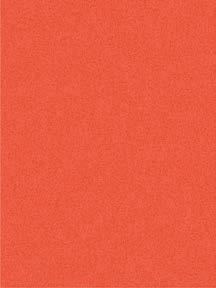
P.O. Box 400, Kenner, LA 70063 504-467-9591, Fax: 504-468-3094 www.milnor.com




www.AmericanLaundryNews.com AMERICAN LAUNDRY NEWS | APRIL 2018 29 Source Directory A convenient guide to sources of products and services PARTS & SUPPLIES CINCINNATI LAUNDRY EQUIPMENT We stock all the parts you need! We have something for everybody! Parts for All Major Manufacturers 2648 Spring Grove Avenue Cincinnati, OH 45214 Phone: 513-542-5000 • Fax: 513-542-5022 www.cincinnatilaundry.com cle@cincinnatilaundry.com Your #1 AJAX Source! AJAX • CISSELL LAVATEC • ALLIANCE IPSO • HUEBSCH JENSEN HYPRO/SUPER SYLON HOFFMAN • VOSS PERMAC
– CONTINUOUS BATCH WASHER-EXTRACTOR – 100 POUNDS OR LESS WASHER-EXTRACTOR – 100 POUNDS OR MORE SMALL-PIECE
WASHERS
FOLDERS
PRESSES – EXTRACTION CONTACT US TO BOOK YOUR AD TODAY! CLASSIFIEDS@ATMAGS COM TO PLACE YOUR AD CALL DON FEINSTEIN 312-361-1682 Source Directory listings in American Laundry News are sold on an annual basis at the following rates: All Major Credit Cards Accepted 2018 Listings Regular Boldface All Caps Four Line Listing per Year $900 $1,130 $1,130 Display and additional line rates available upon request Company Page Company Page INDEX OF ADVERTISERS A.L. Wilson Chemical Co. 9 ADI American Dawn 5, 17 ADC 13 Consolidated Laundry Machinery 21 ClearWater Tech LLC 24 Direct Machinery Sales Corp. 26 Energenics 20 Girbau Industrial 7 Hydro Systems 19 The Griffin Group Inc. 26 J.P. Equipment 26 Kannegiesser ETECH 23 Kemco Systems 24 LaundryCareers.com 26 Lavatec Laundry Technology 32 McClure Industries 25 Norchem Corp. 11 PSP Industrial 26 Parker Boiler 25 Pellerin Milnor 3 Stanco Industries .....................................................................................26 UniMac 15 Venus Group 31 Washburn Machinery Inc. 26 MICROFIBER Durable Micro ber Cloths www.texasmicro ber.com 214-810-9563/800-742-2913 ///////////////////////////////////////////////////////////////////////////////////////////// (844) 447-5559 // www.maxi-press.us PRESS MEMBRANES LAUNDRY SPARE PARTS Place your ad ONLINE!
Gurtler Industries named Supplier of the Year by Universal Unilink
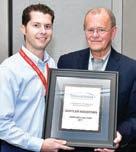
SOUTH HOLLAND, Ill. — Gurtler Industries Inc., a manufacturer of advanced detergents and specialty chemicals for the commercial and institutional laundry industry, was recently recognized by Universal Unilink as its Supplier of the Year, the company reports.
Jake Gurtler, regional vice president of corporate accounts, accepted the award for Gurtler, presented by President Allan Fowler, during Universal Unilink’s annual awards banquet held in Orlando.
Universal Unilink noted at the awards ceremony that Gurtler Industries stands out in its service to members with local support, information and technical training to help them provide exceptional quality and service to their customers.
Universal Unilink is a purchasing association providing its independently owned laundry members with training, best practices, pricing advantage and marketing tools.
Messe Frankfurt acquires stake in Middle East textile care event
FRANKFURT AM MAIN, Germany — Messe Frankfurt has acquired a majority holding in Middle East Cleaning Technology Week in Dubai, further strengthening its position in the Middle East, one of the fastest growing regions of the world, reports the fair and exhibition company.
Messe Frankfort says it will organize the event in cooperation with VIS Exhibition and Conferences, Dubai. Held annually, Middle East Cleaning Technology Week brings together three trade fairs at the same time and place: Gulf Laundrex for the laundry and drycleaning sector, Clean Middle East for the cleaning-contractor segment and Gulf Carwash for the car-care business.
The next edition takes place at the Dubai International Convention and Exhibition Centre, Nov. 13-15.
“By participating in the trio of fairs, we are enlarging our worldwide portfolio of textile care fairs,” says Wolfgang Marzin, president and CEO of Messe Frankfurt. “Now, in addition to the world’s leading trade fair for the sector, Texcare International in Frankfurt, we also organize two leading regional trade fairs for the sector, Texcare Asia in Shanghai and Gulf Laundrex. Moreover, with the Texcare Forum Russia and Texcare Forum India, we support the exchange of ideas and information in other important textile care markets.”
Almost 150 companies, many of them international market leaders, present their products and services at the three trade fairs, according to Messe Frankfurt. More than 30 companies and leading international brands were represented at Gulf Laundrex 2017.
Discussing the benefits of the cooperation, Dr. Kayyum Ali Bohra of VIS Exhibitions, Dubai, says, “We anticipate a wide variety of synergistic effects from working with Messe Frankfurt, especially in terms of internationality and sectorspecific expertise. As the world’s leading organizer of trade fairs with a strong base in Dubai, collaboration with Messe Frankfurt in these niche sectors will add value and enhance the experience of the exhibitors.”
Messe Frankfurt says it and VIS Group also collaborate in the field of textile care in India: the Texcare Forum India conference, which made its debut in January 2018, was held concurrently with Laundrex Mumbai.
Nineteen certified in Performance Matters Coaches Clinic
FORT MILL, S.C. — Nineteen laundry/linen service professionals have completed High Performance Team (HPT) Coaches Clinic Service Leadership Training through Performance Matters, a service that helps textile rental companies grow, the company reports. This is the third set (Charlie) of graduates to complete this training platform.
Performance Matters says over the last year, the 19 graduates experienced rigorous training built solely for the textile rental and linen service industry. The Coaches Clinic and HPT training platform provides service leadership the foundation necessary to perform their jobs effectively and safely, and to take the next step in delivering world-class service, resulting in higher revenue growth and profits for their companies, according to the company.
Over the course of the program, the Coaches Clinic graduates received classroom training along with more than 240 service training lessons housed in the HPT Online Training platform. Performance Matters says the online curriculum goes hand-in-hand with the Coaches Clinic onsite training, delivering an overall learning experience unmatched in the industry.
Coaches moved through each class segment with designated teams throughout the training series, completing all classes together, fostering individual and team accountability. Only those who complete the program graduate, earning a certification that is becoming a standard in the industry for service training, according to the company.
Charlie Class 2018 graduates include:
• Alliant Systems: Leslie Farmer
• Ames Linen: Doug Bushnell
• Budget Uniform: Neil Phillips
• CTC Corp.: Scott Johnson
• Economy Linen: Ryan Roche
• Gallagher Uniform: Josh Eichler
• Huebsch Services: Brian Lanners, Tim Benjamin
• Loop Linen: Corey Guillot
Calendar
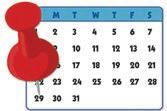
April
10-12 JENSEN USA
Service Seminar: Flatwork Finishing Systems
Panama City, Fla. Info: 850-271-5959
11 TRSA
Webinar: Active Shooter Training: Are You Prepared? Alexandria, Va. Info: 703-519-0029
16-20 Pellerin Milnor CBW®/PBW® Service School New Orleans, La. Info: 504-712-7716
17-19 JENSEN USA
• Metro Linen: Johnny Perez
• New System Laundry: Gabe Ripple
• Plymate: Ben Warnecke
• Sanico: Jeremy Helms, Craig Minshew
• Sohn Linen: Jason Hagy, James Stokes
• Specialty Mat: Marcin Zmarzly
• Springfield Laundry: Adam Castle
• Tritex Services: Wesley Bethune
Performance Matters says this recent group of graduates adds to the Alpha and Bravo graduating classes, bringing the total HPT Certified Coaches to nearly 40 for the industry.
With increased demand and understanding the ongoing needs of the industry for service training, Performance Matters opened registration for the next Class (Echo) at the CSC Convention in March.
ALN
Career Track
Milnor names new application engineering manager

Kelley
ALN
KENNER, La. — Pellerin Milnor Corp. recently named Ryan Kelley as its new application engineering department manager, according to the company. Kelley’s duties will now expand to directly supporting the members of the application engineering team so that they can properly size, design/layout and coordinate projects for customers. Kelley joined Milnor in 2012 as a project manager after graduating from the University of Louisiana at Lafayette with a bachelor of science in industrial technology engineering. Since then, he has completed both TRSA’s Production Management Institute (PMI) and Executive Management Institute (EMI), where he was designated as a Certified Professional Laundry Manager.
Service Seminar: Senking Batch Washing Systems Panama City, Fla. Info: 850-271-5959
18 TRSA
Webinar: Navigating
TRSA’s New Website and Accessing Resources Alexandria, Va. Info: 703-519-0029
17-19 G.A. Braun
Service School: Finishing Equipment Syracuse, N.Y. Info: 800-432-7266
19 Association for Linen Management Webinar: Everything You Didn’t Know You Needed to Know About Cart Management Richmond, Ky. Info: 859-624-0177
24 JENSEN USA
Service Seminar: DTX Tumbler/Dryer Systems Panama City, Fla. Info: 850-271-5959
30 APRIL 2018 | AMERICAN LAUNDRY NEWS www.AmericanLaundryNews.com
ALN
Pellerin
Continued from Page 25
Jake Gurtler (left) accepts the Supplier of the Year award from Allan Fowler, president of Universal Unilink. (Photo: Gurtler Industries)
Venus has often been described as a “hidden gem” which the dictionary defines as “something which is extremely outstanding and not many people may know about.”
Let’s change that. For over 45 years, Venus has been providing smart technology-driven solutions to the hotel, hospitality and institutional industries, and continues to expand our product lines to meet the evolving demands of our customers and their customers alike.
We invite you to Discover Venus for yourself to learn more about our complete line of products. From terry towels to table linens, and aprons to bar mops, we’re here to make you look good.
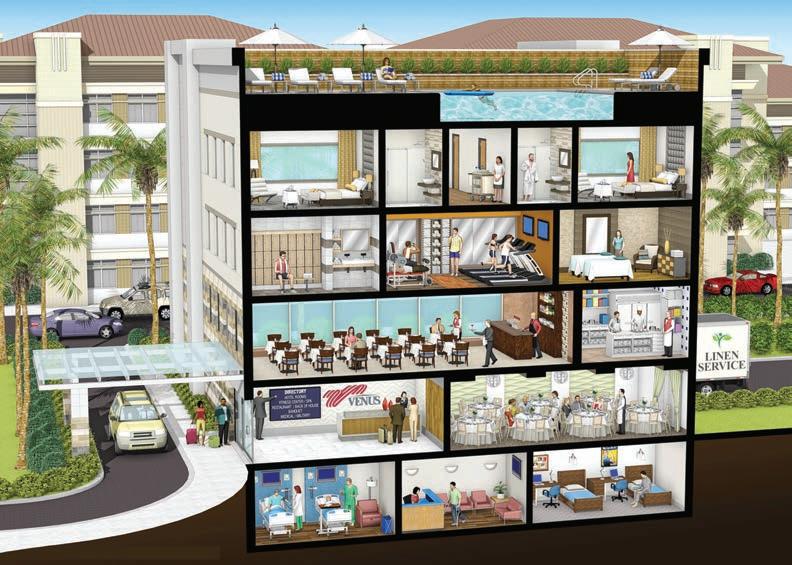
Discover our new website | www.VenusGroup.com 800-421-6599 Call us today for more information FARM 2 FINISH® ® Yes, We Do That Too! Discover Venus | INSTITUTION
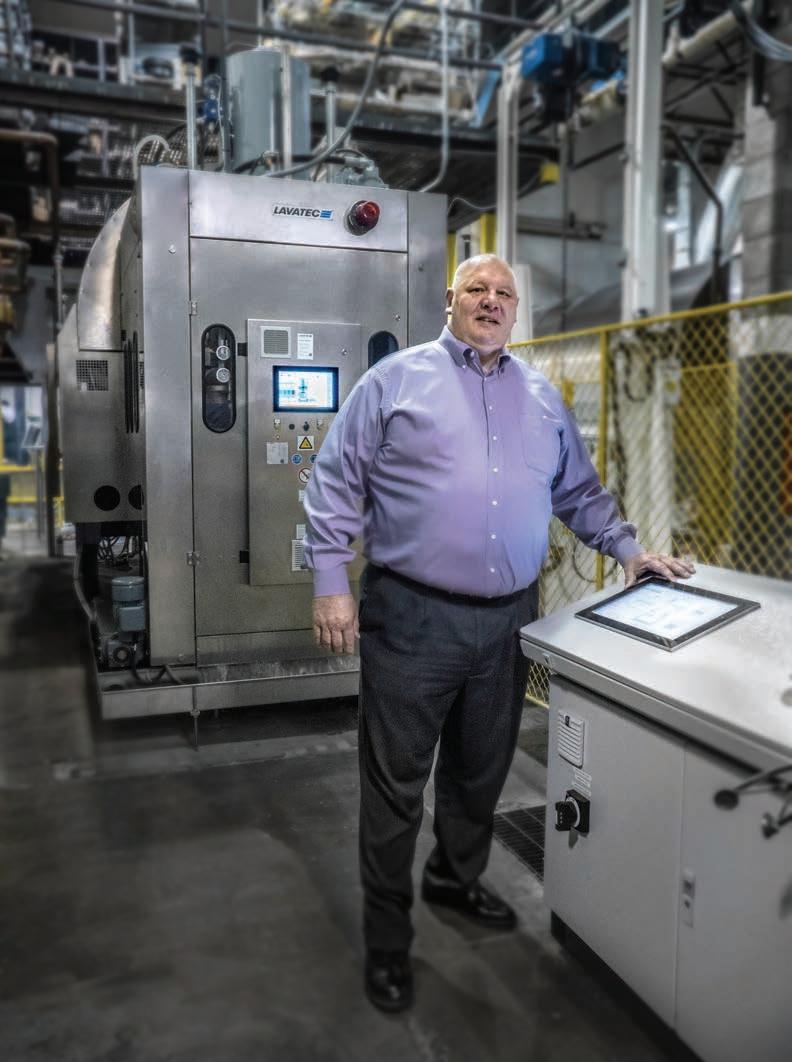


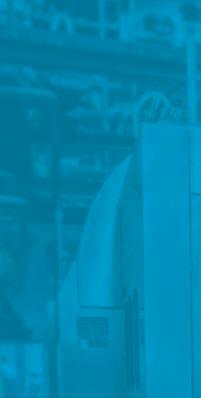





 BY MATT POE, EDITOR
BY MATT POE, EDITOR


 BY MATT POE, EDITOR
BY MATT POE, EDITOR







































































































































































































































































































